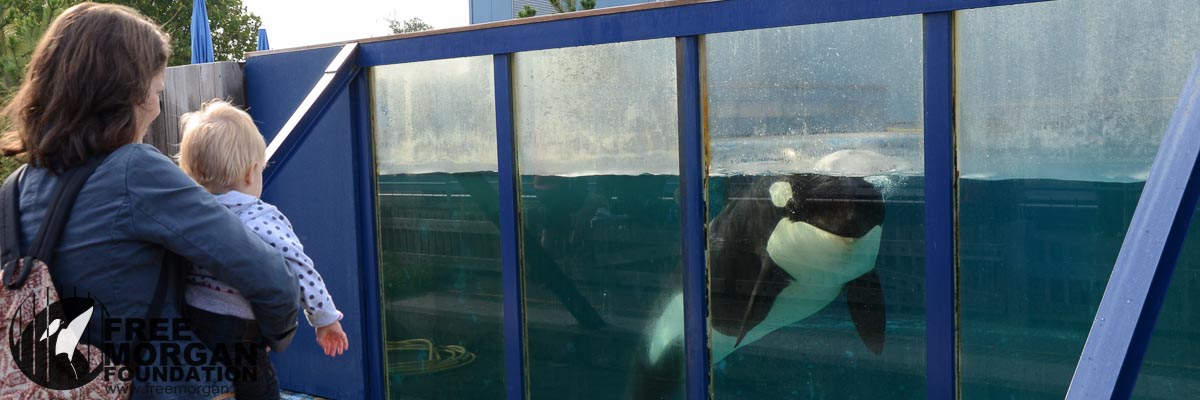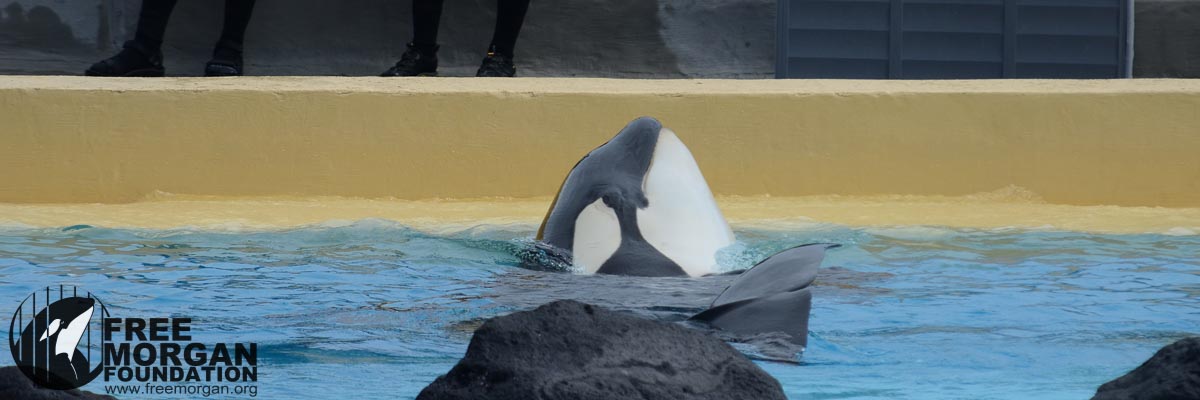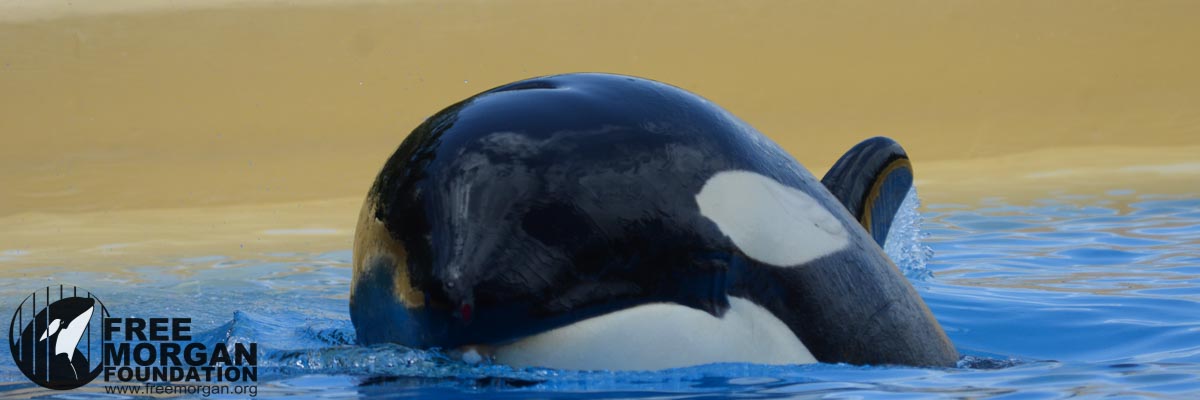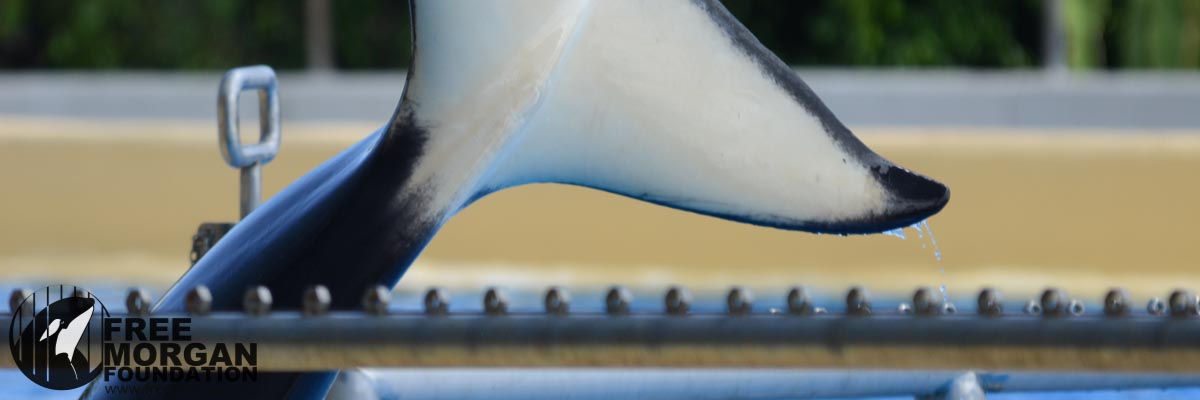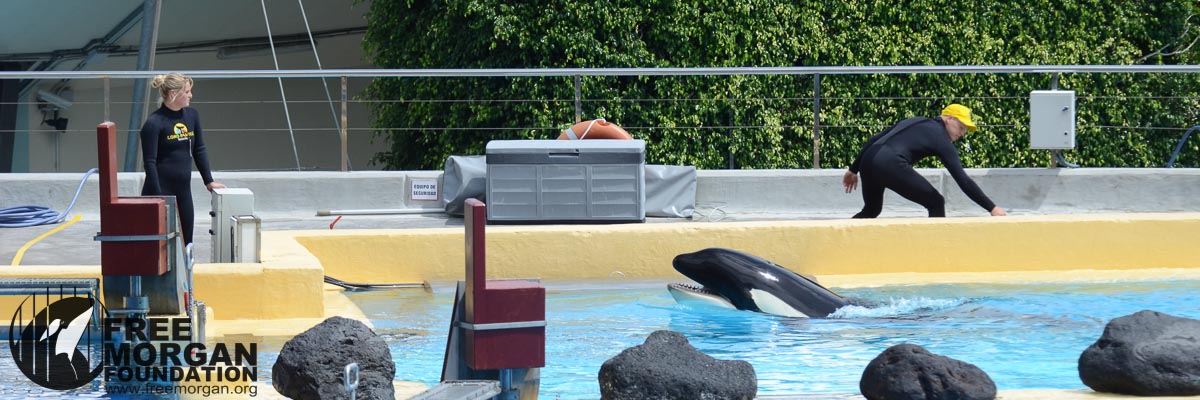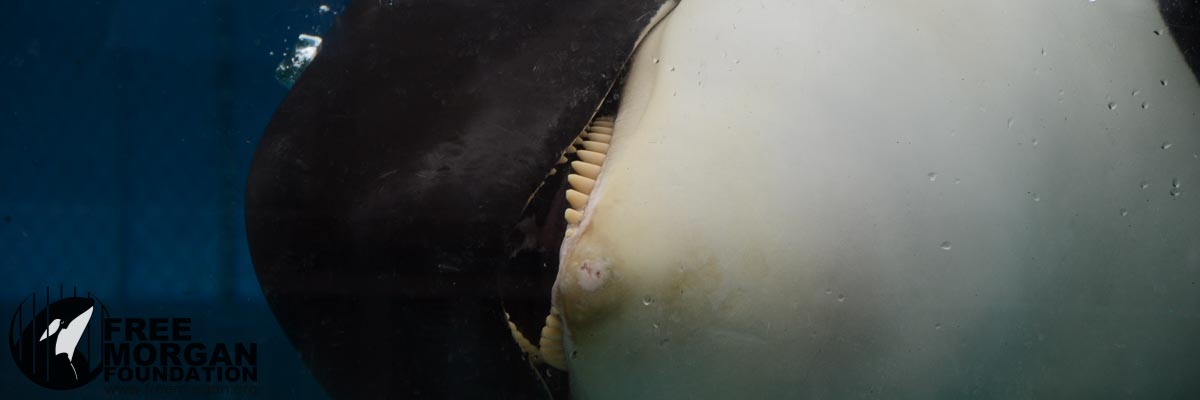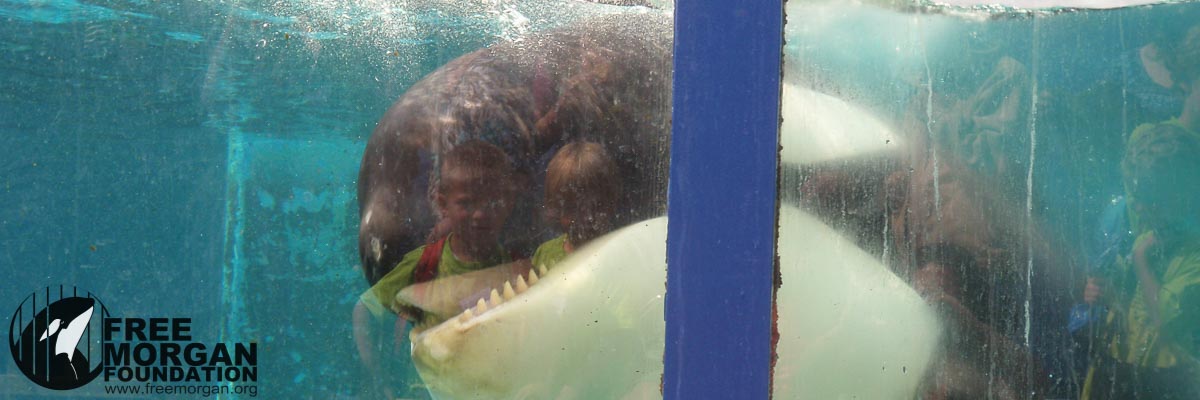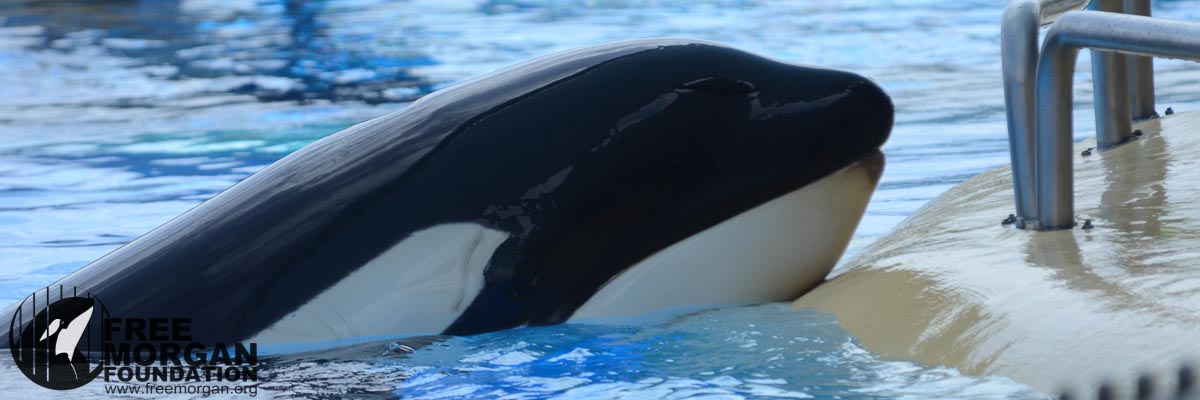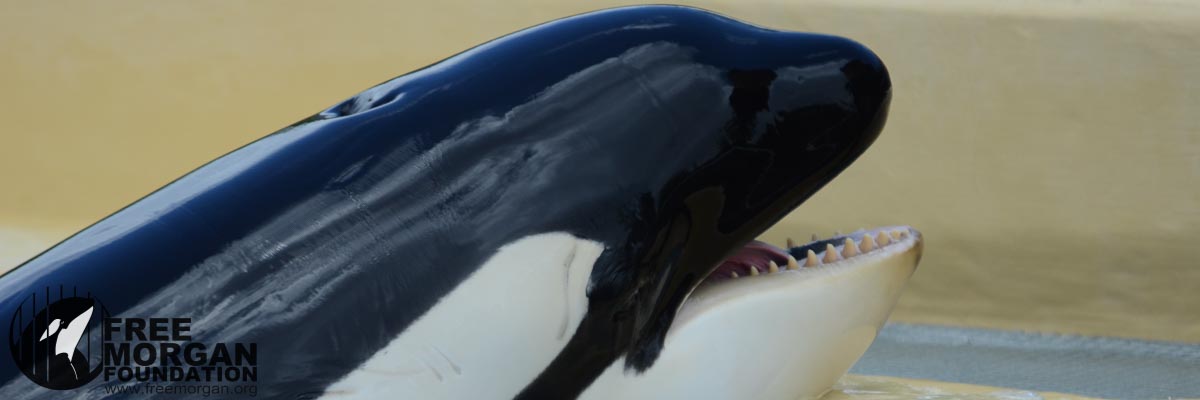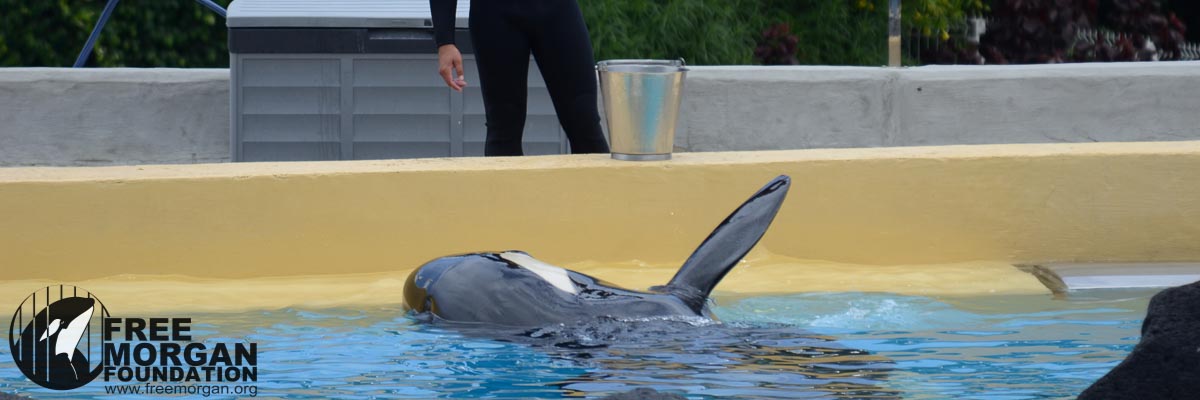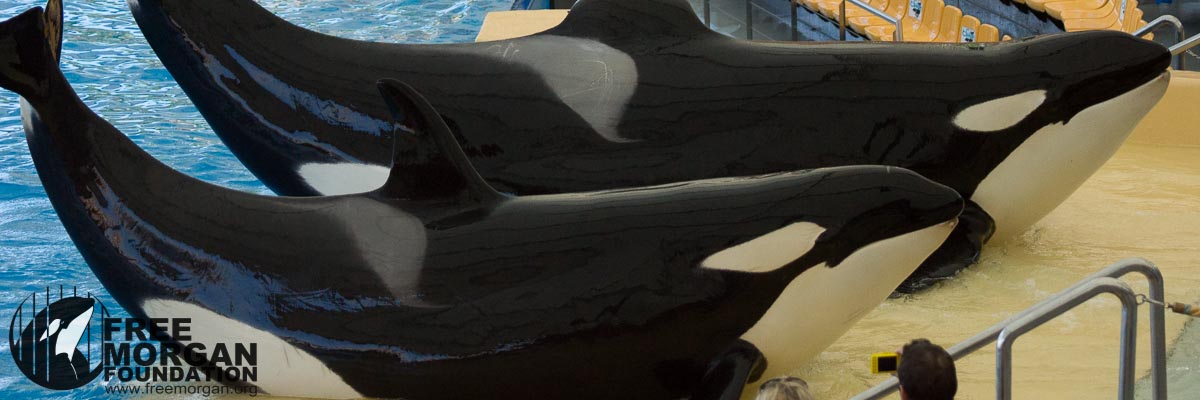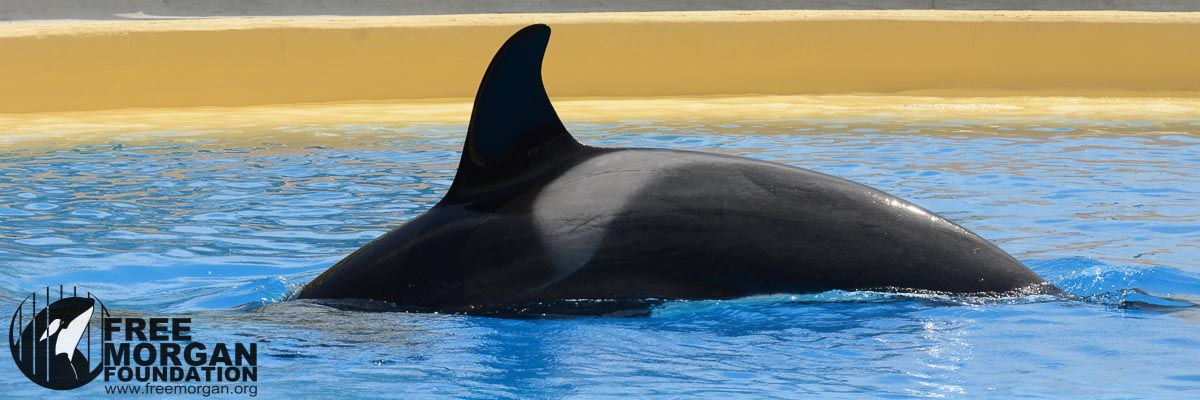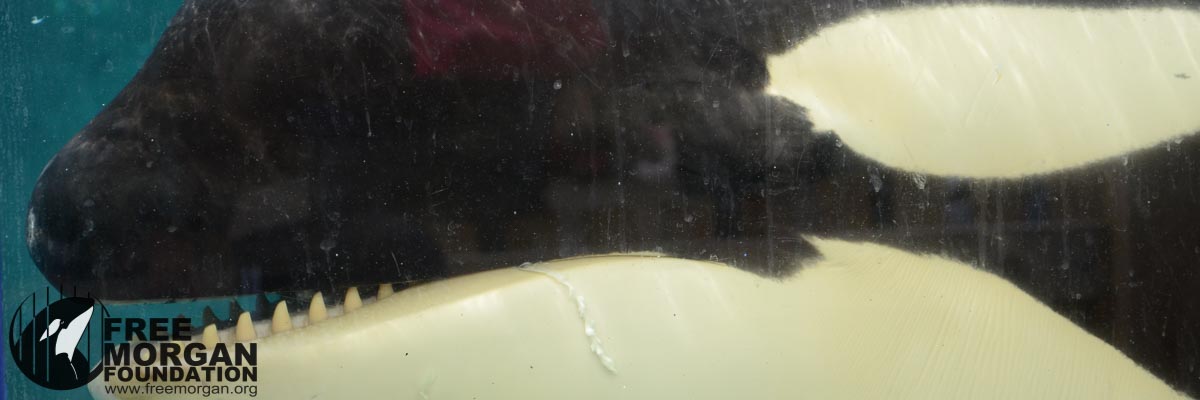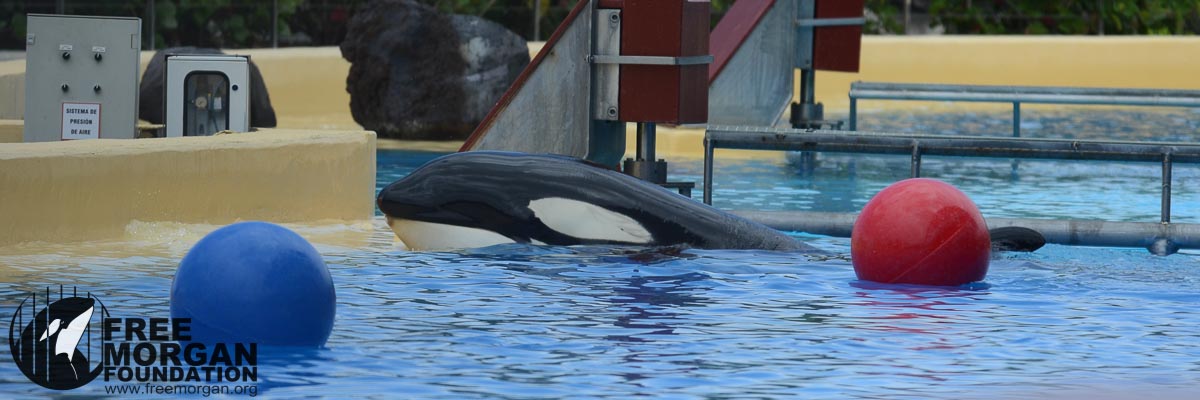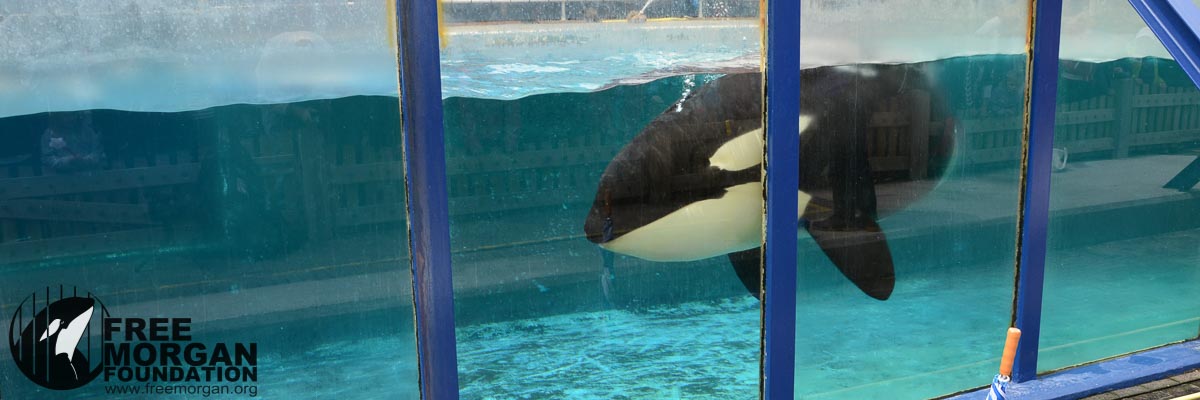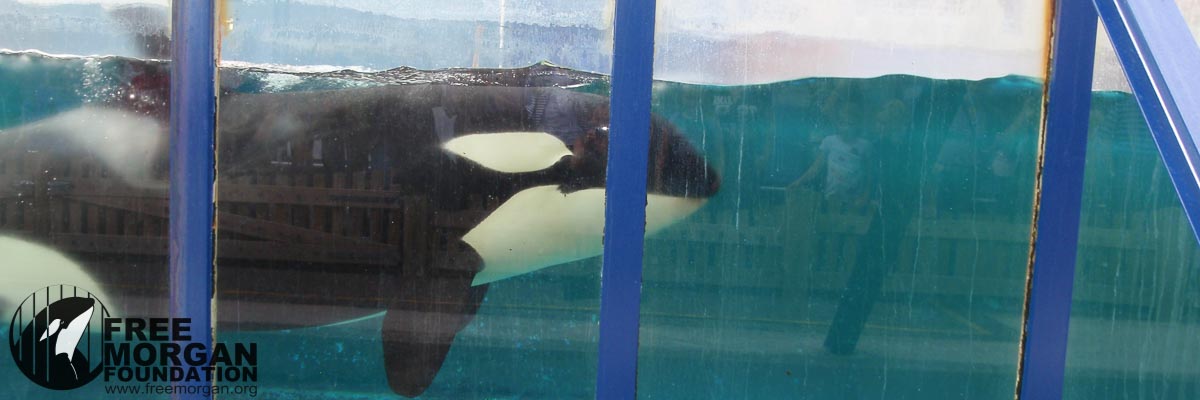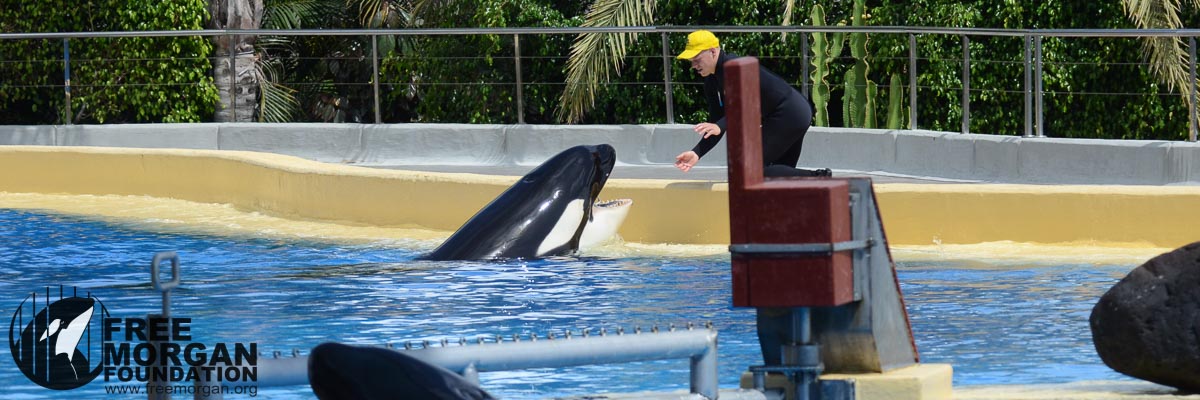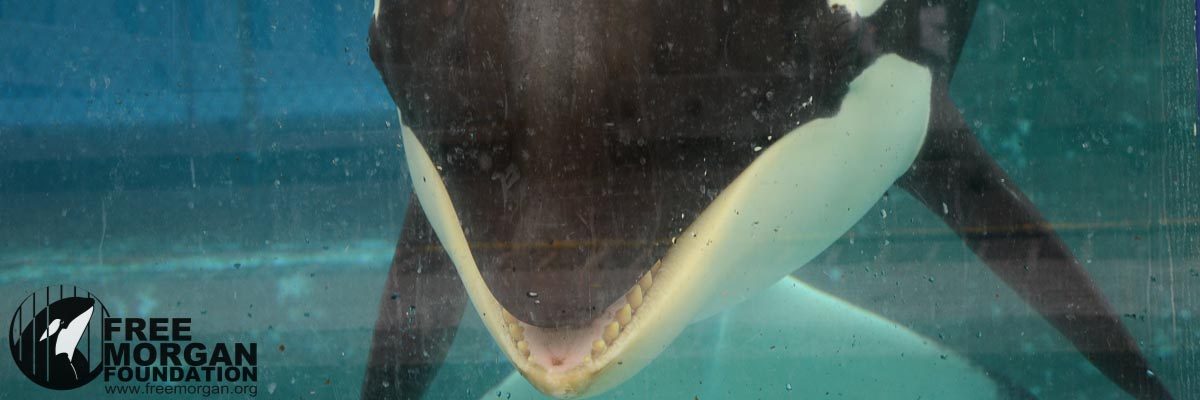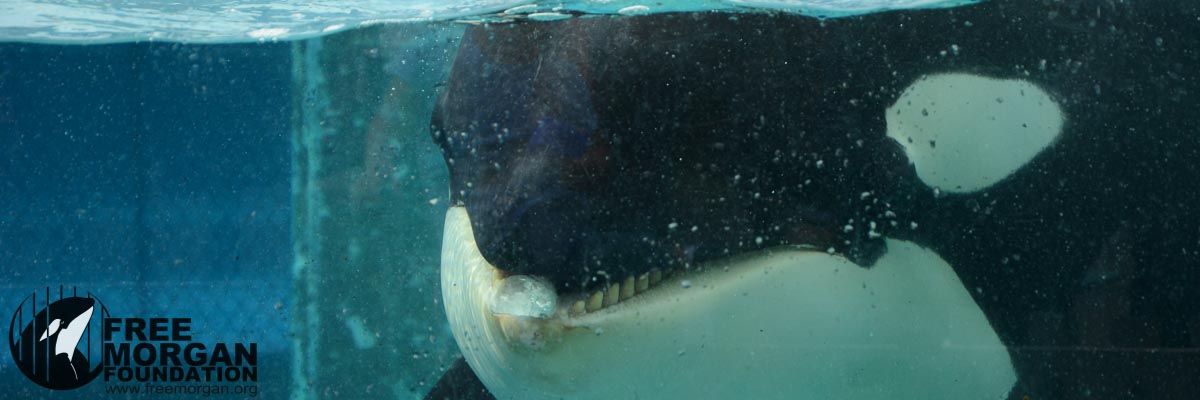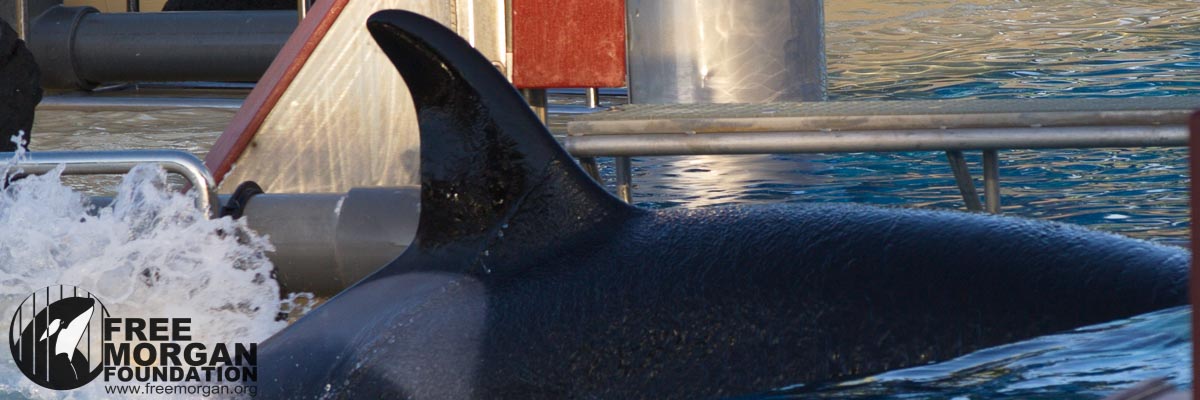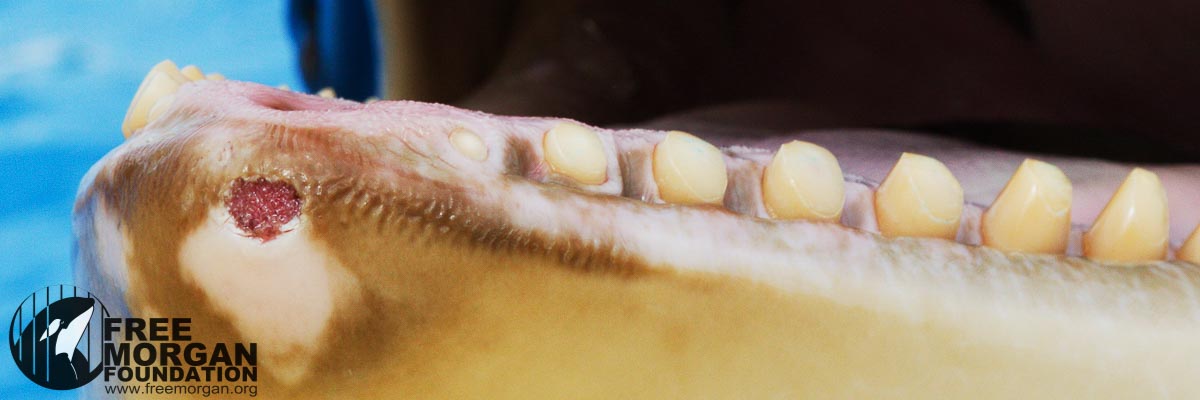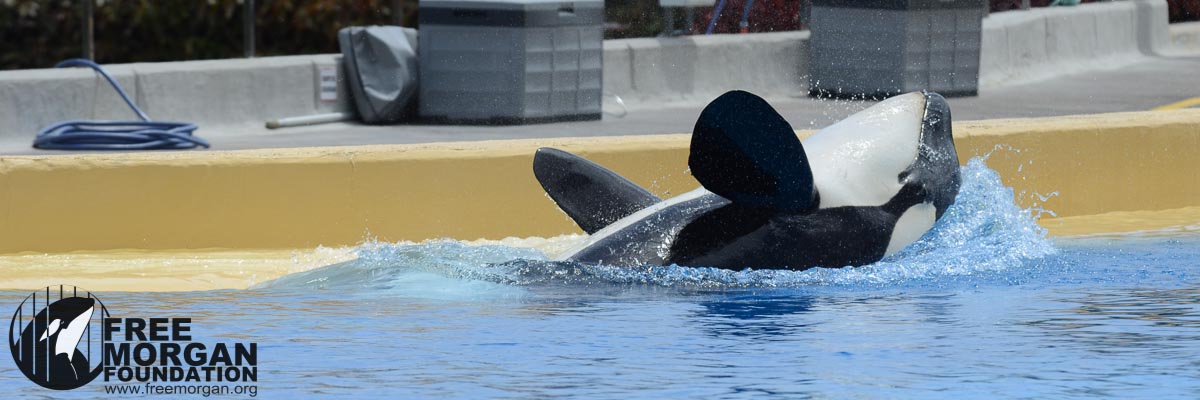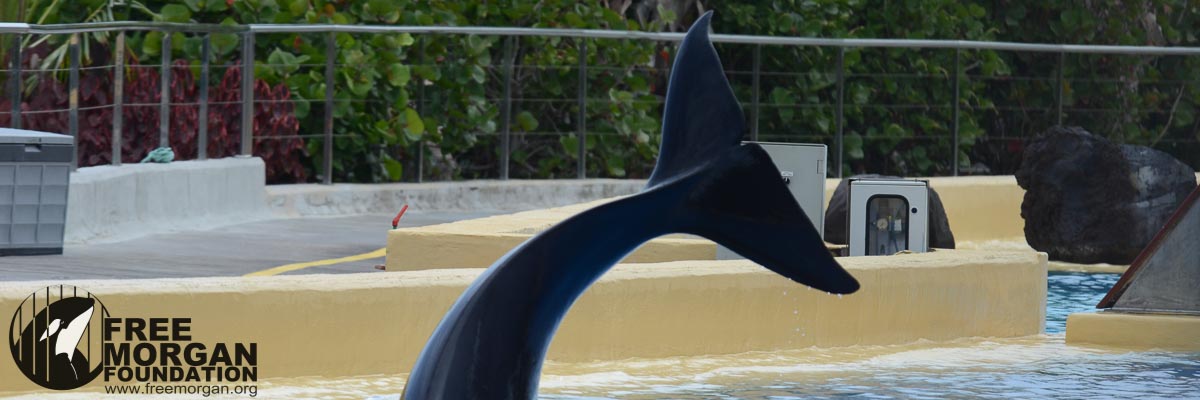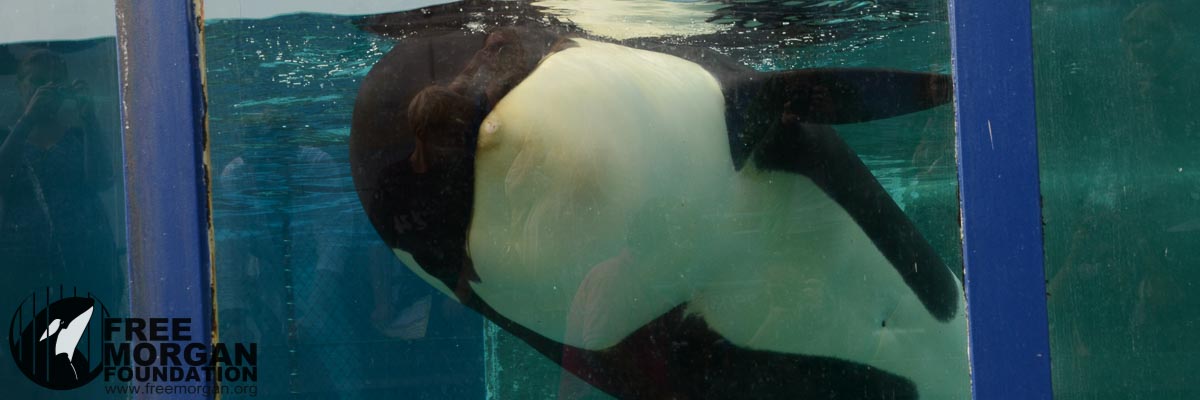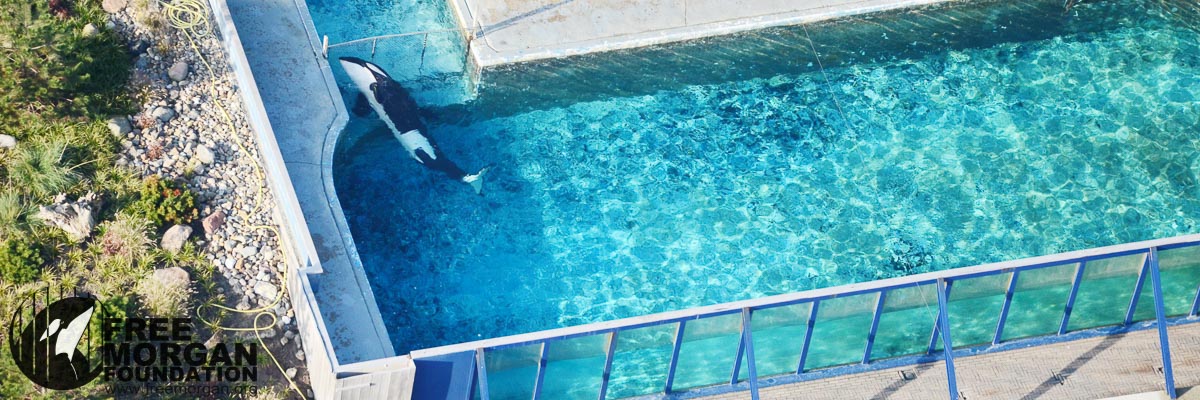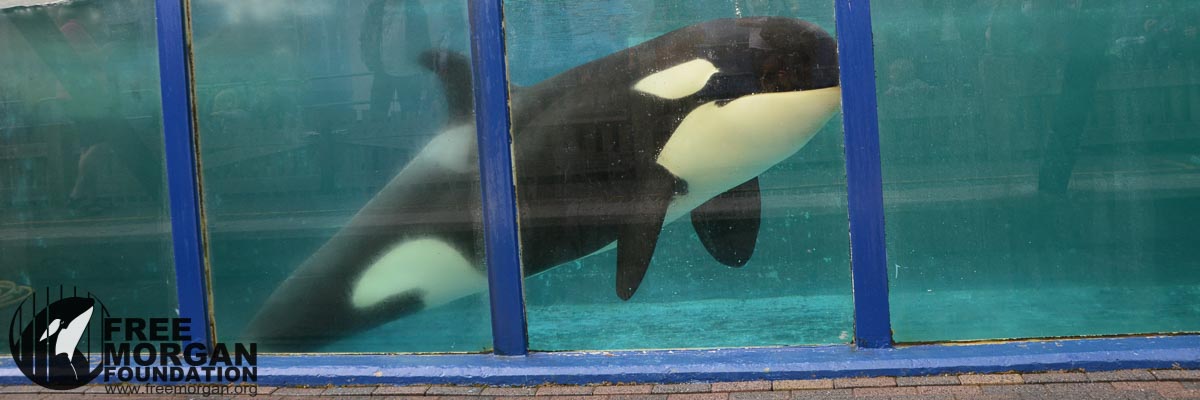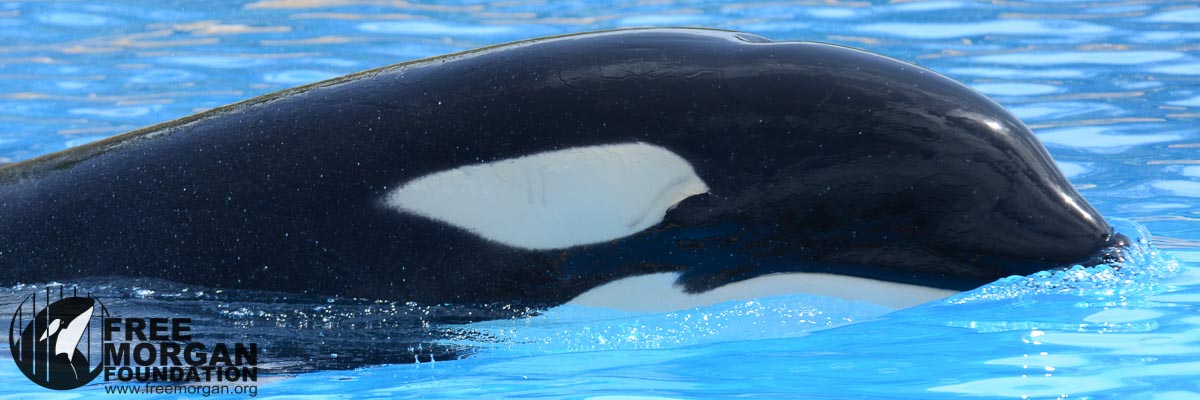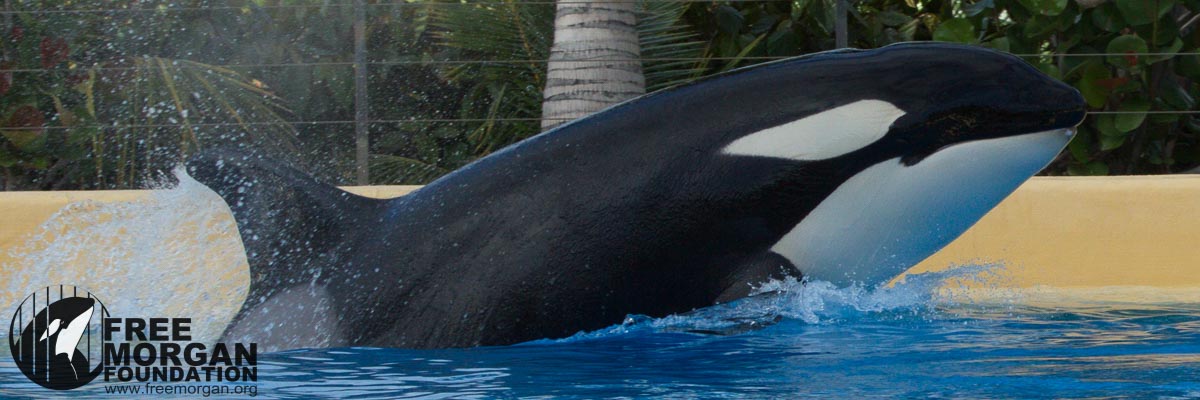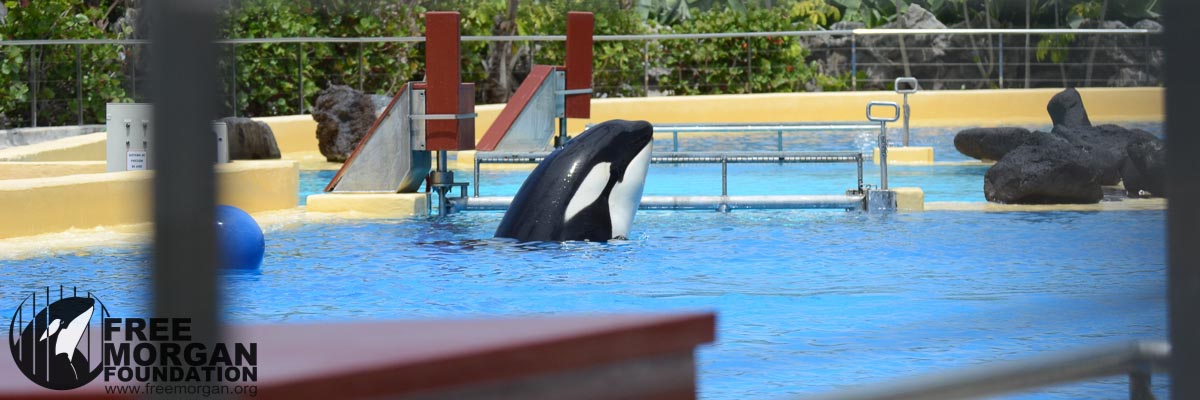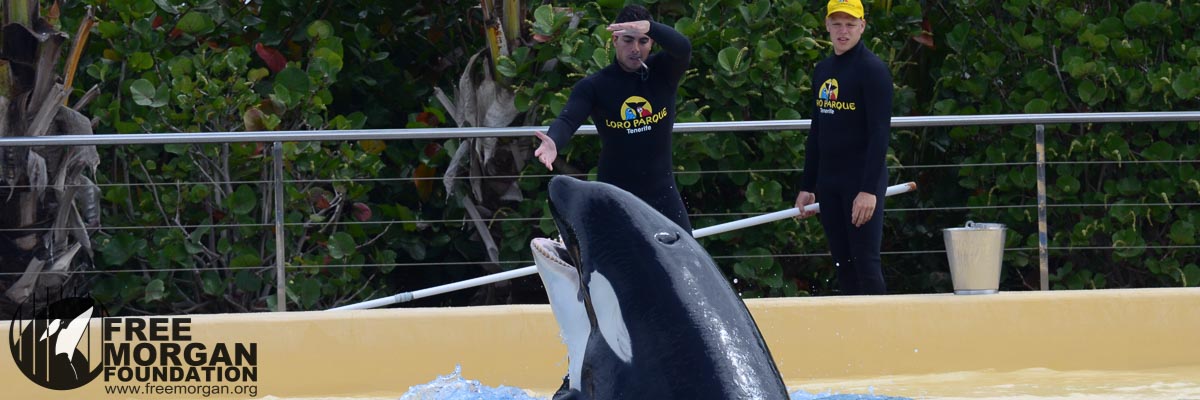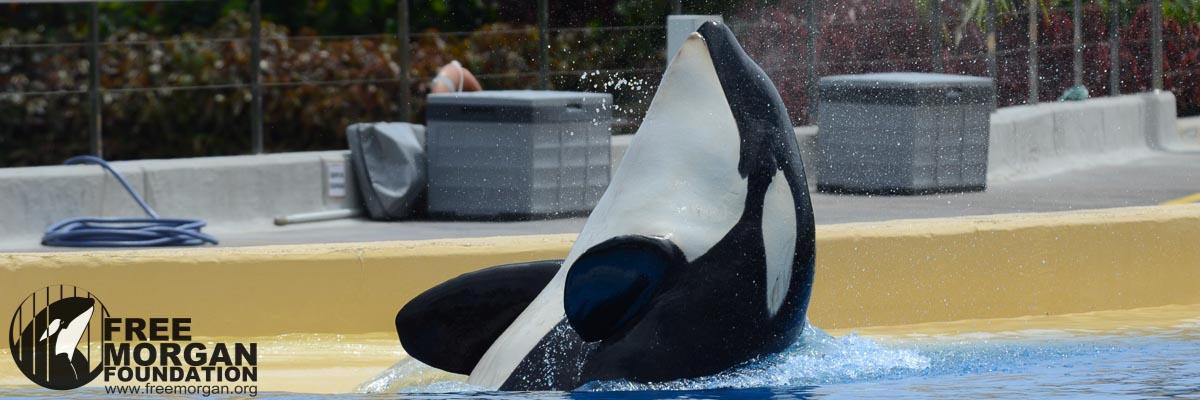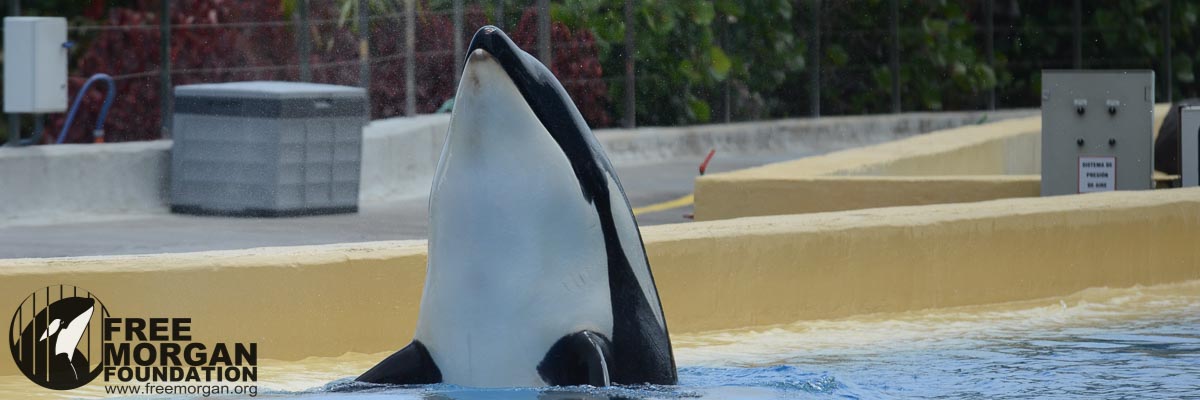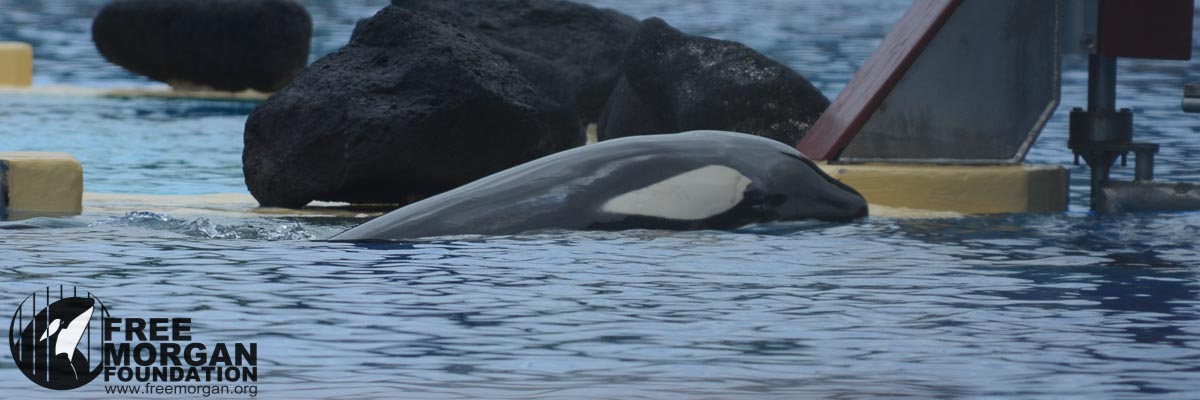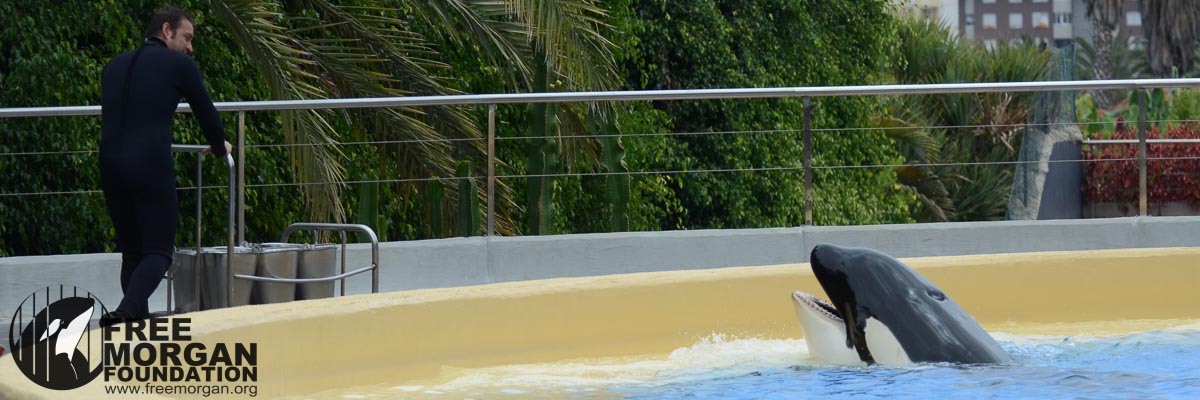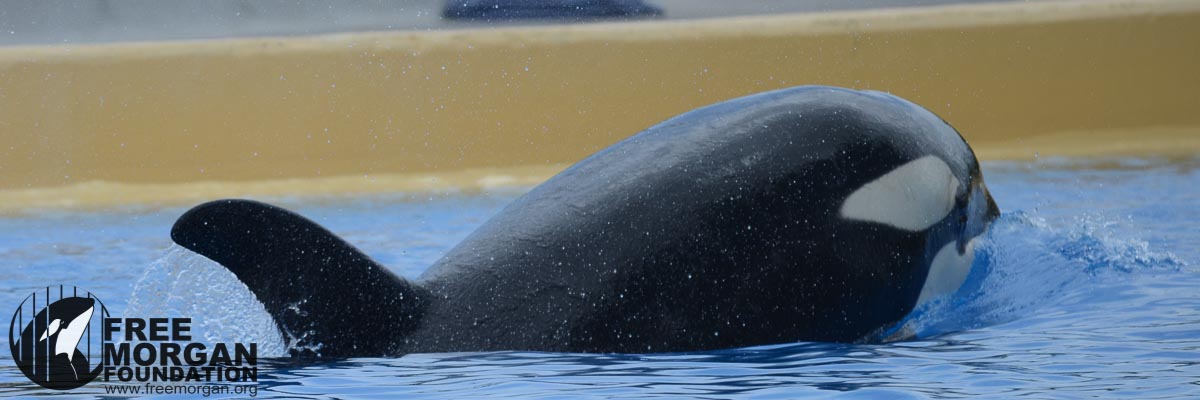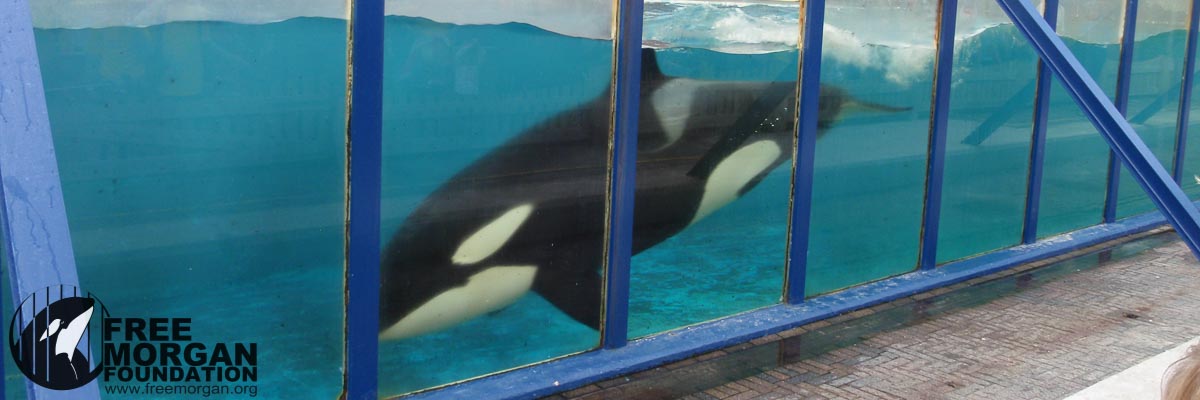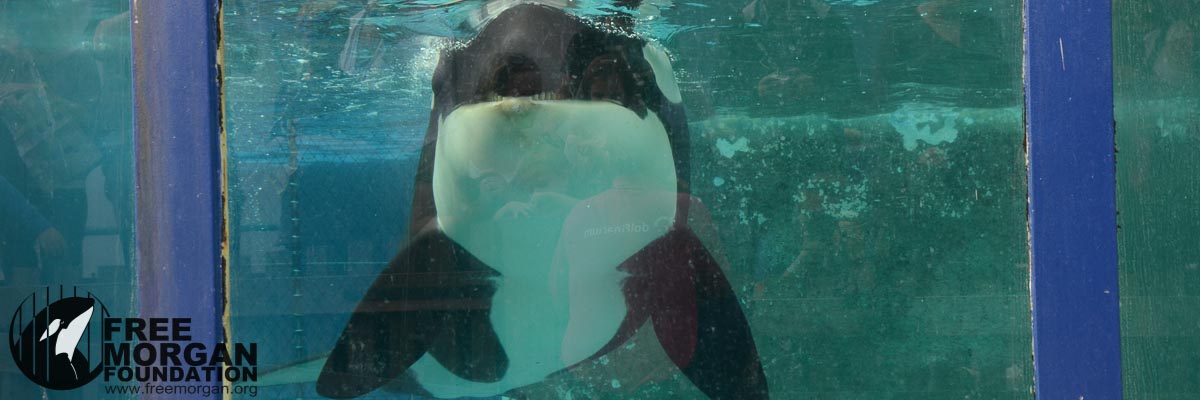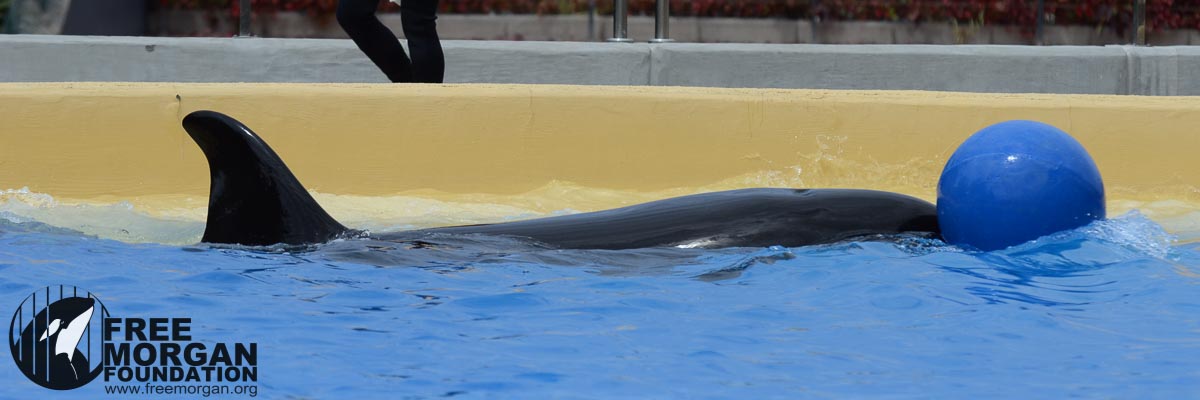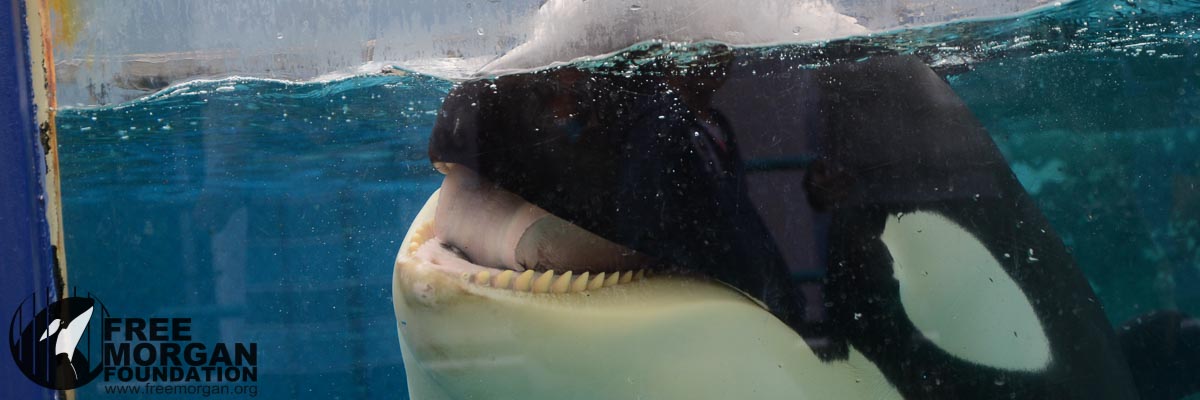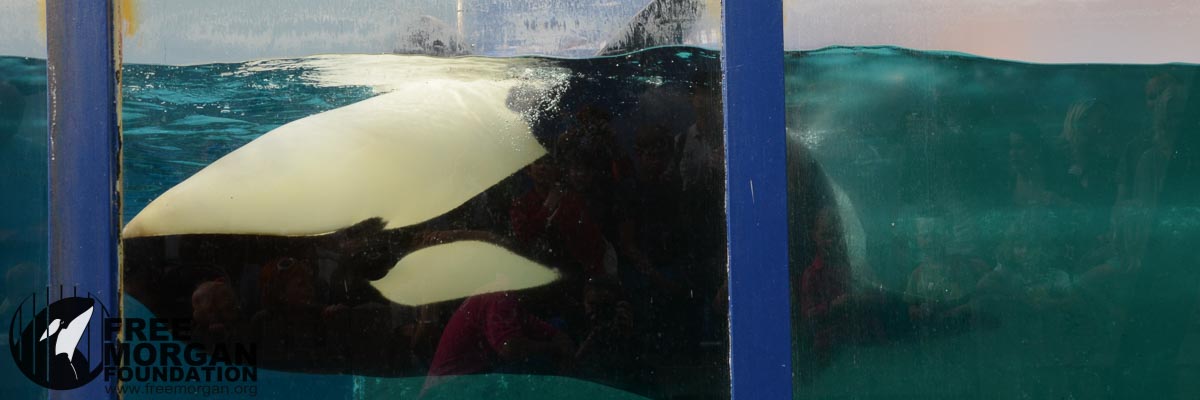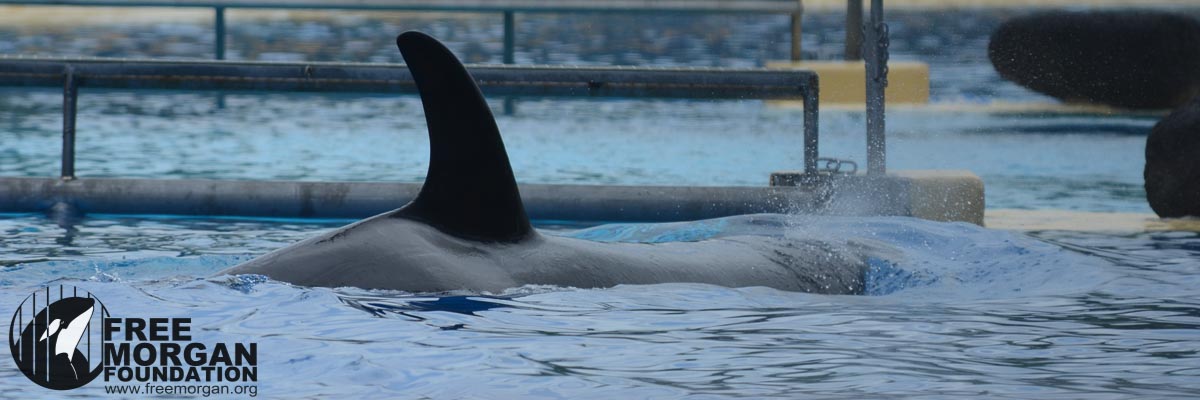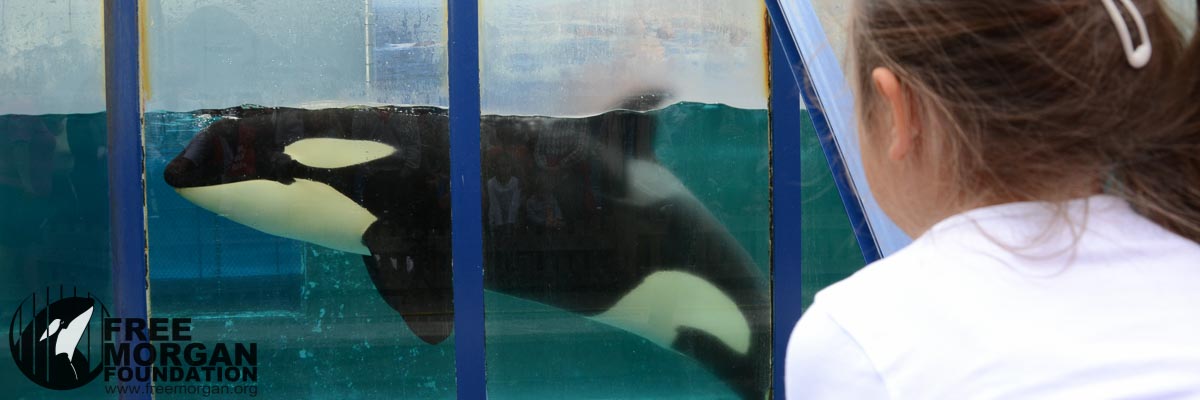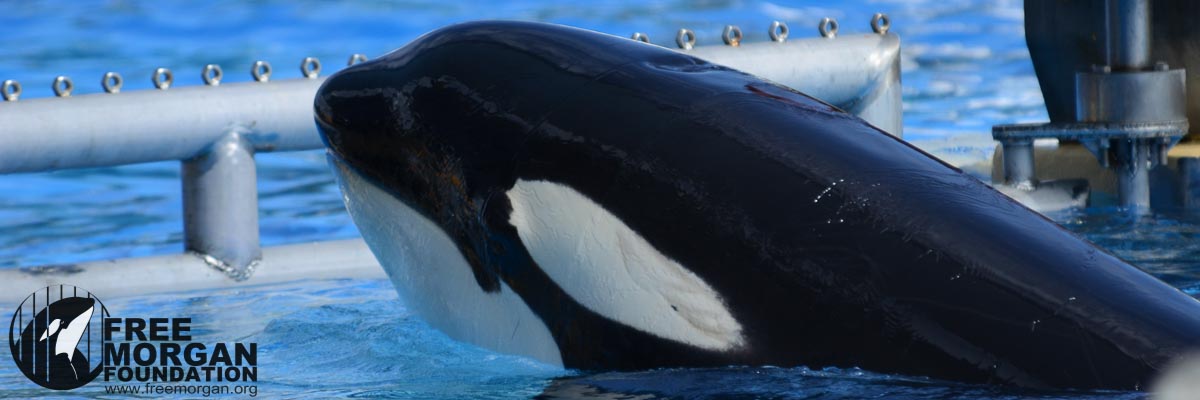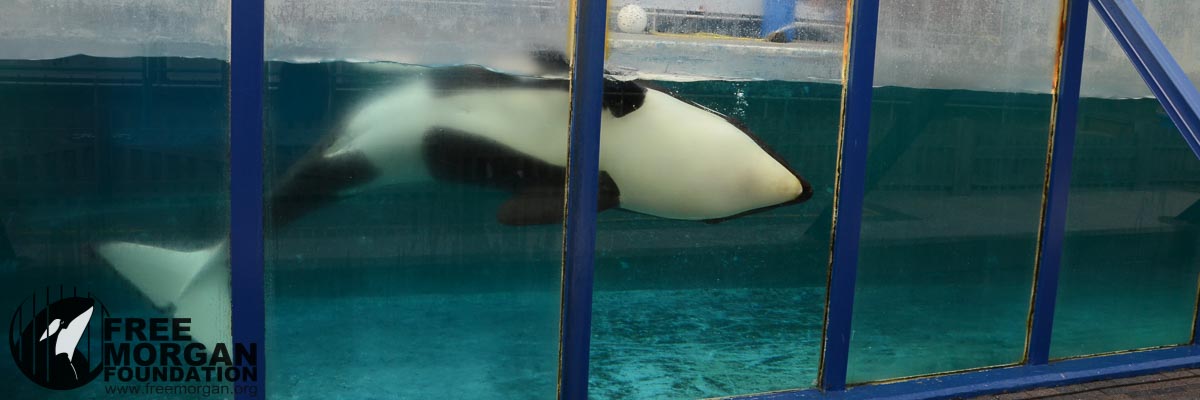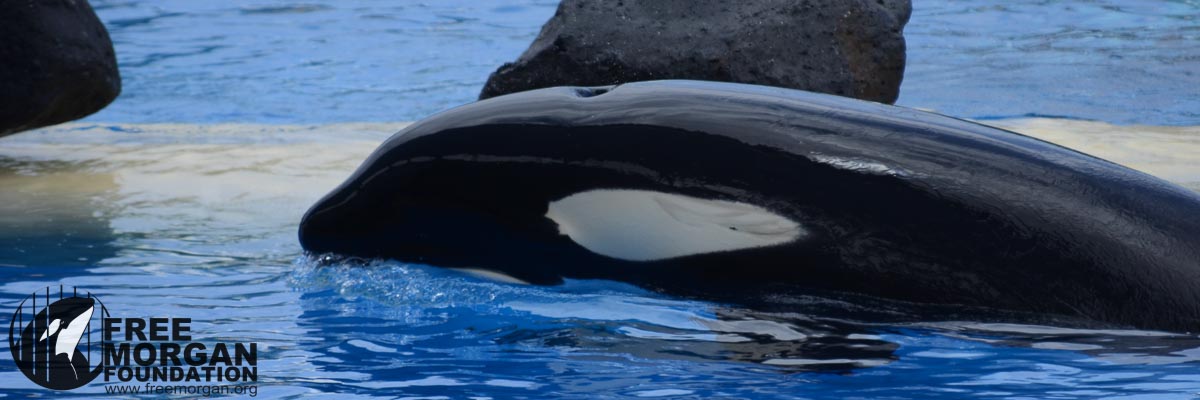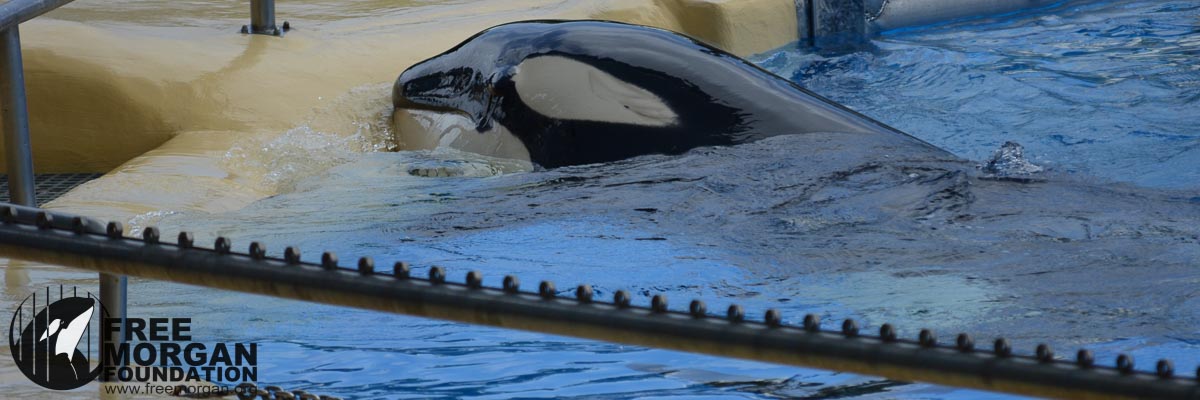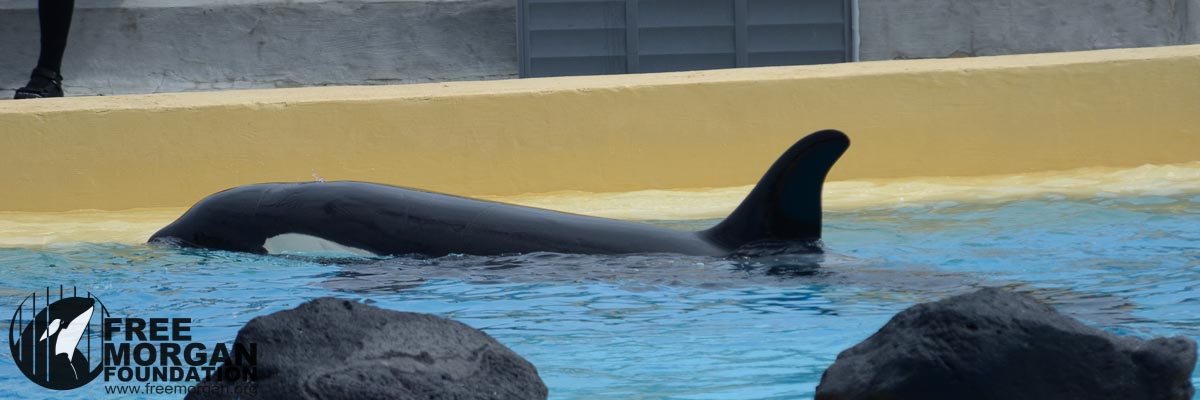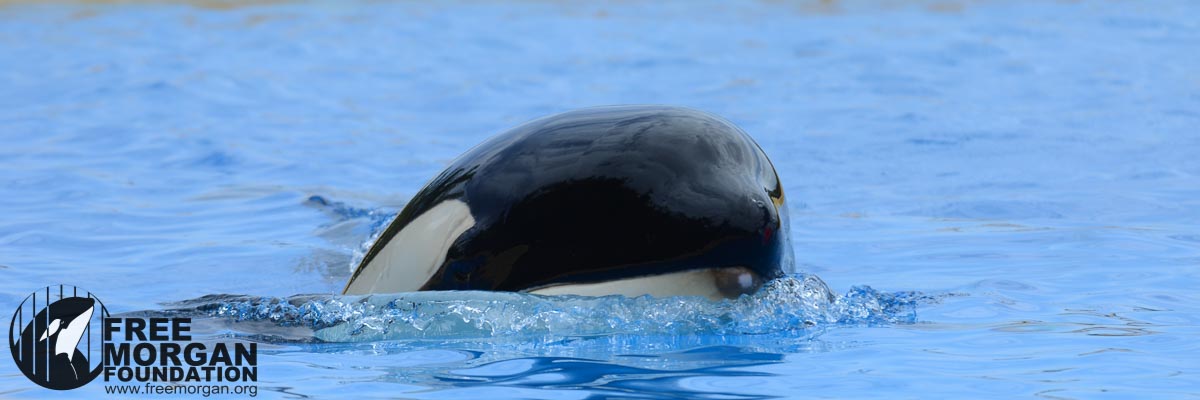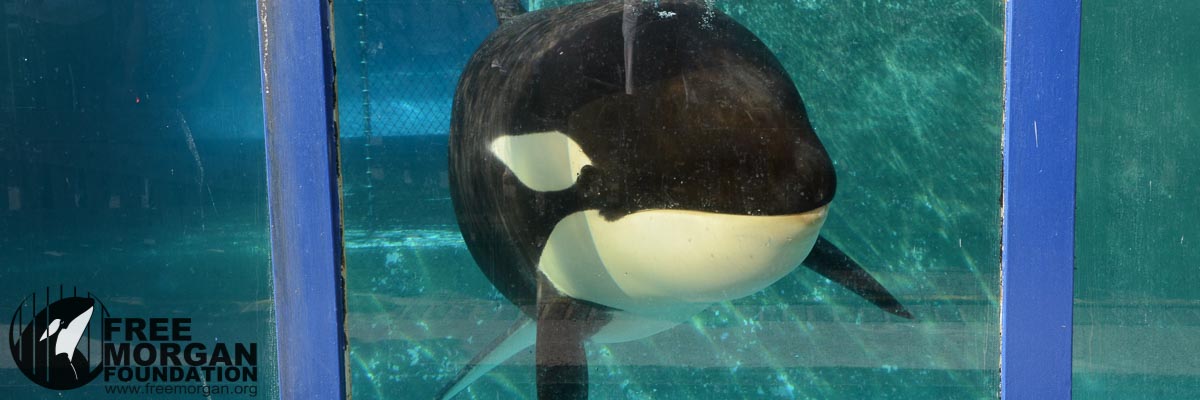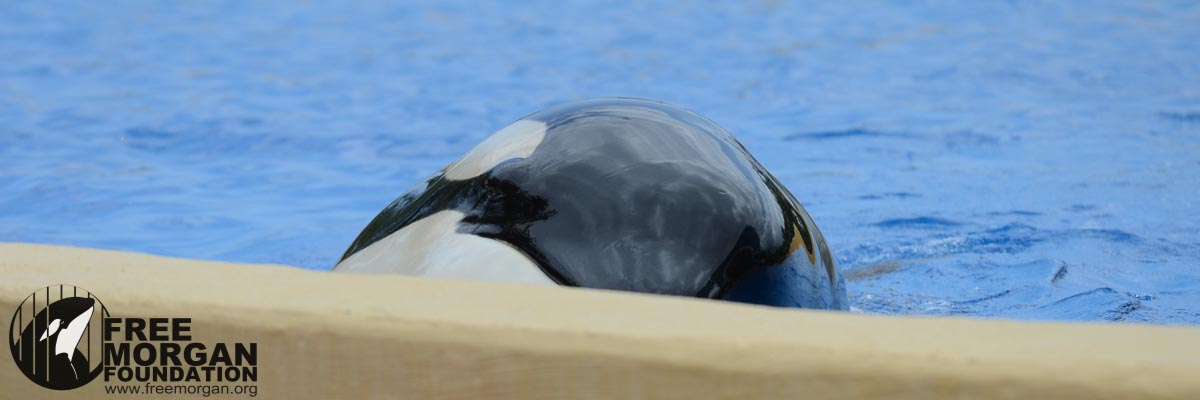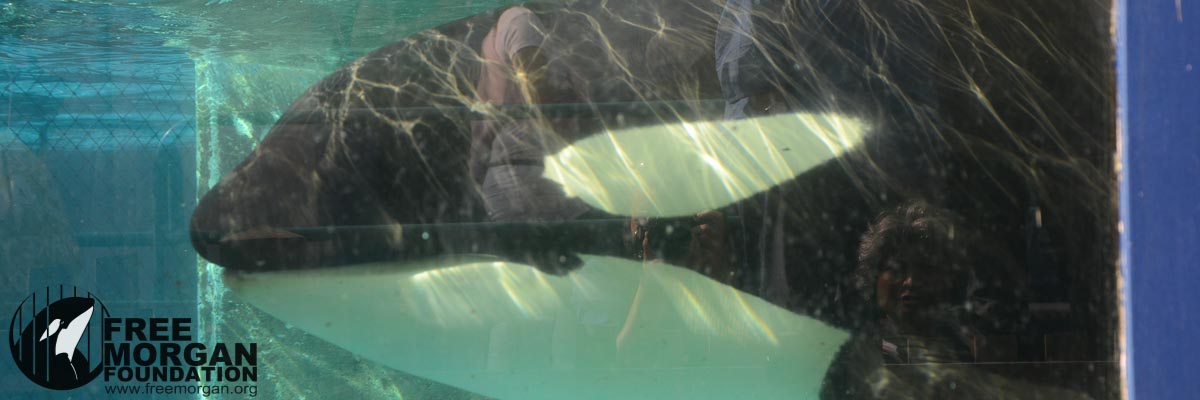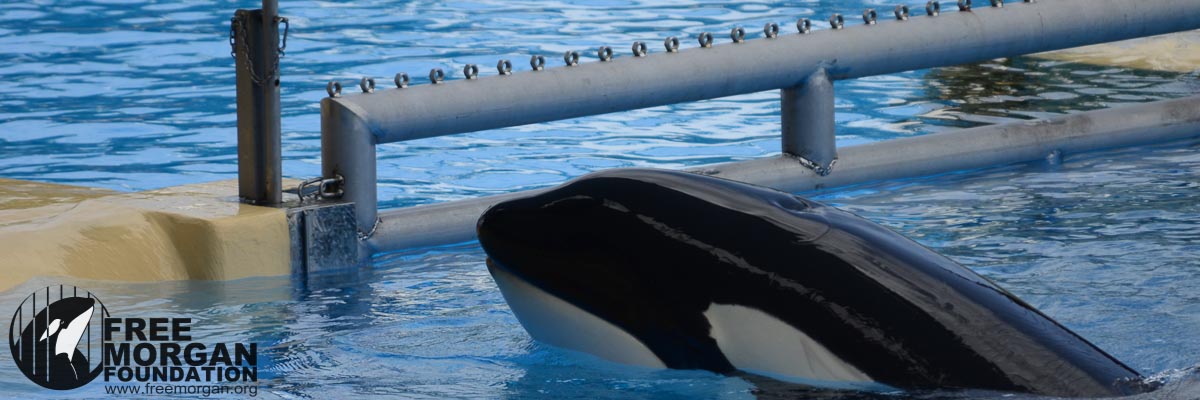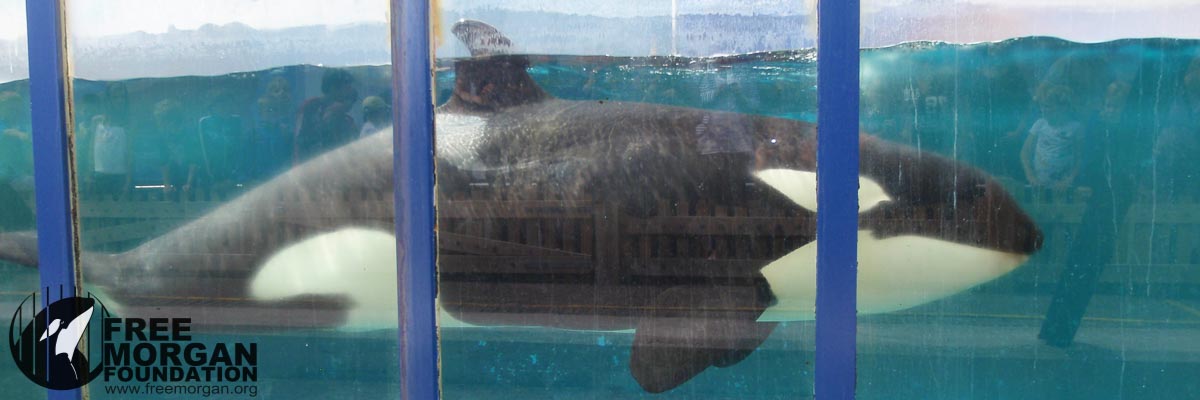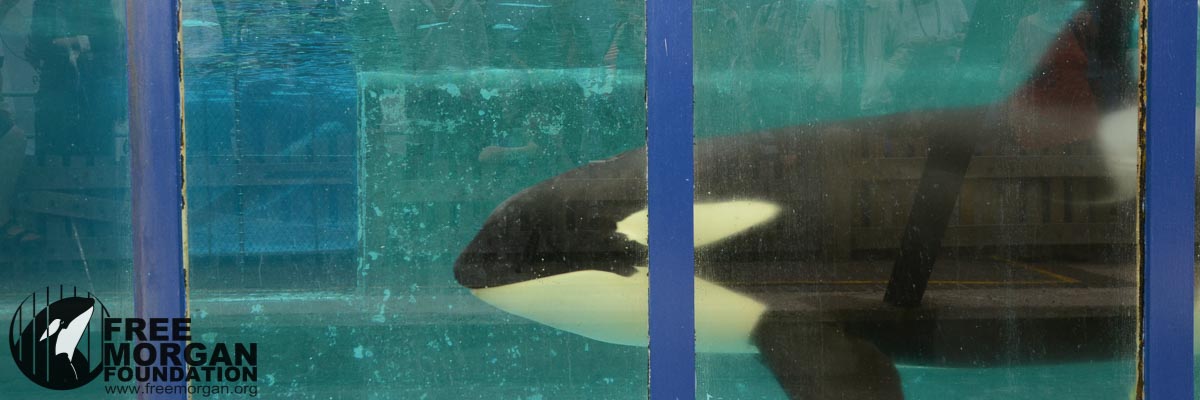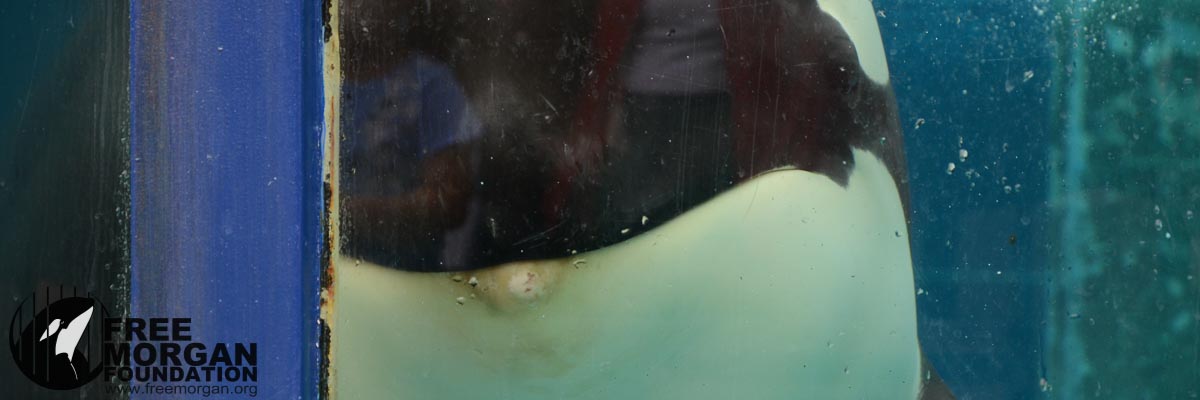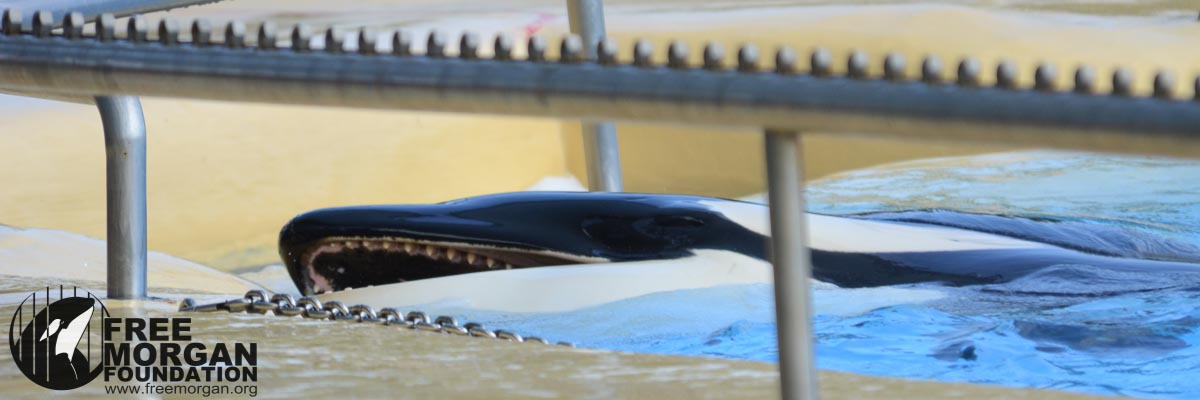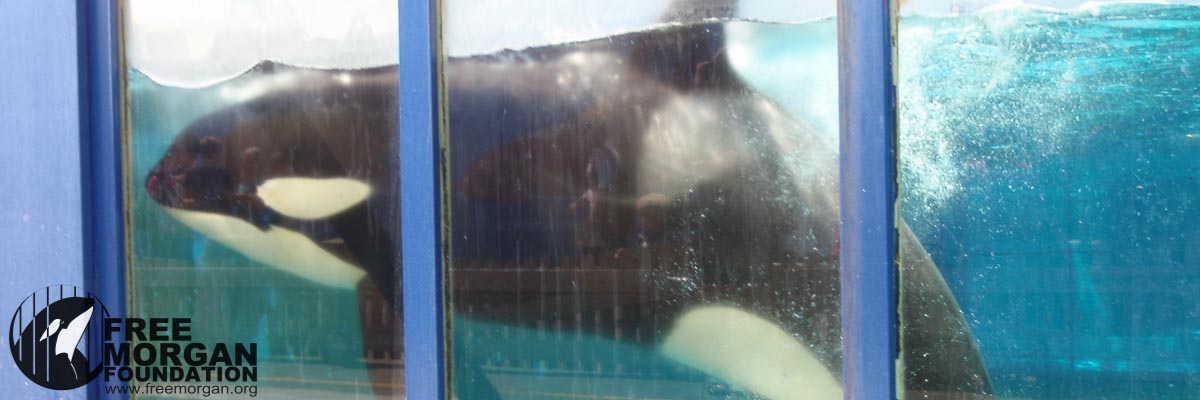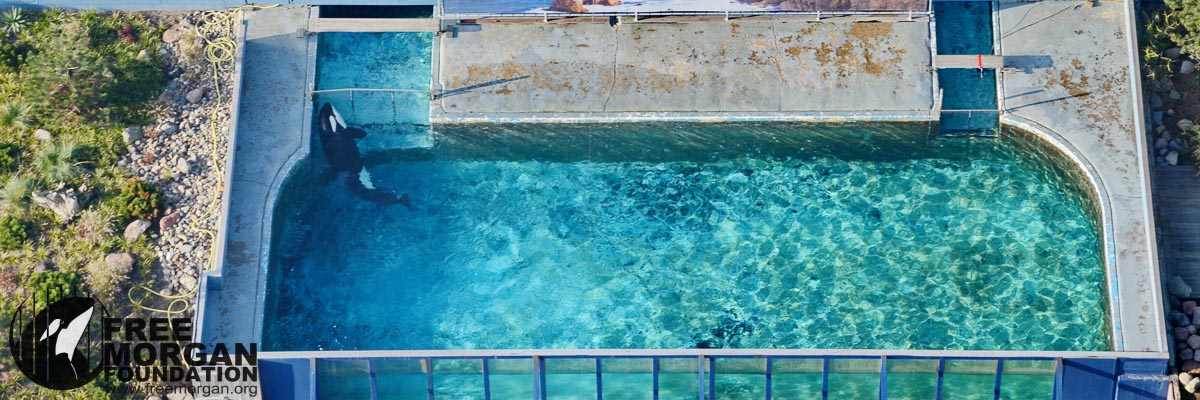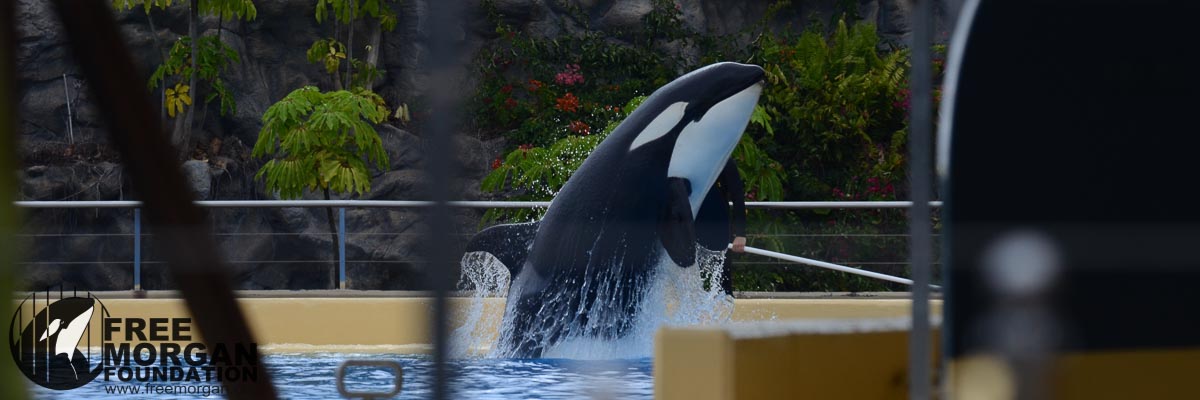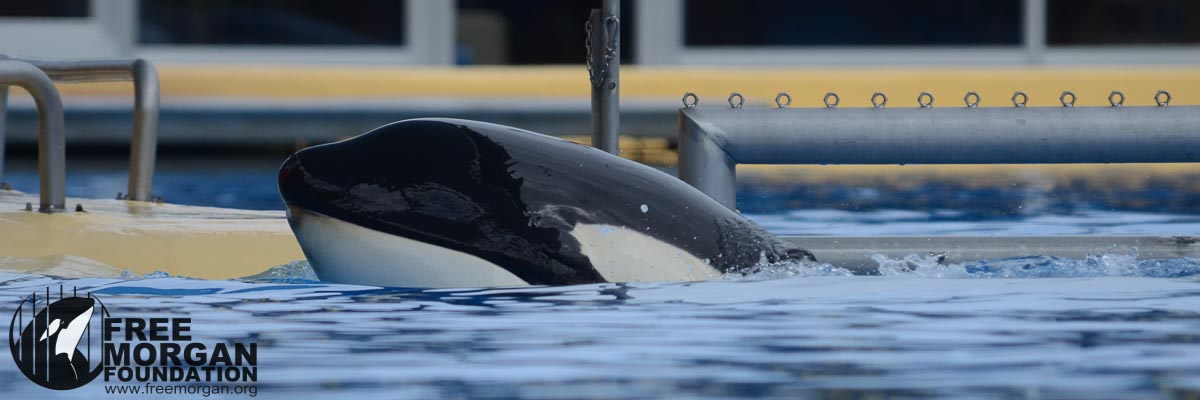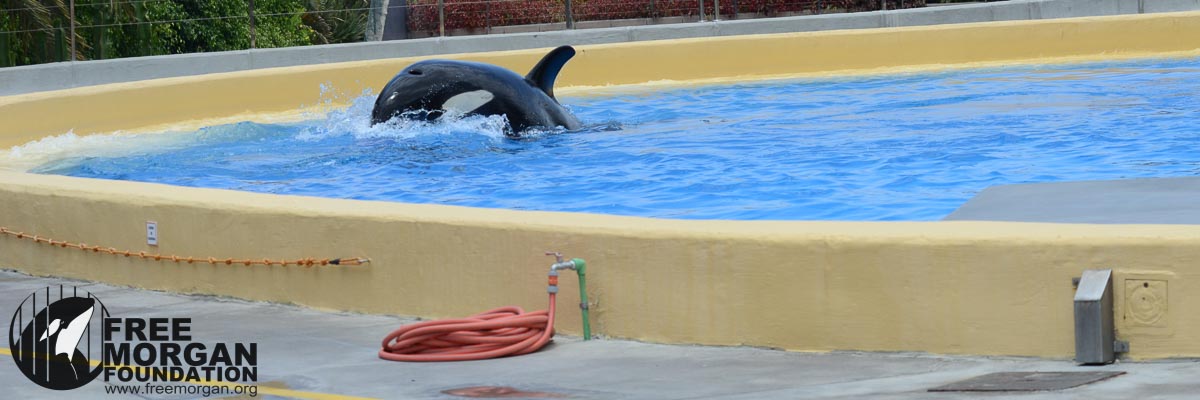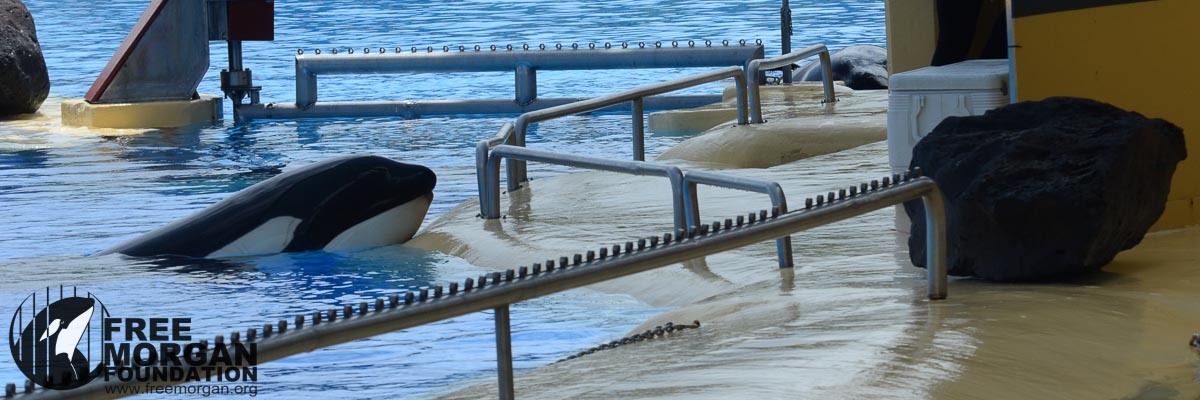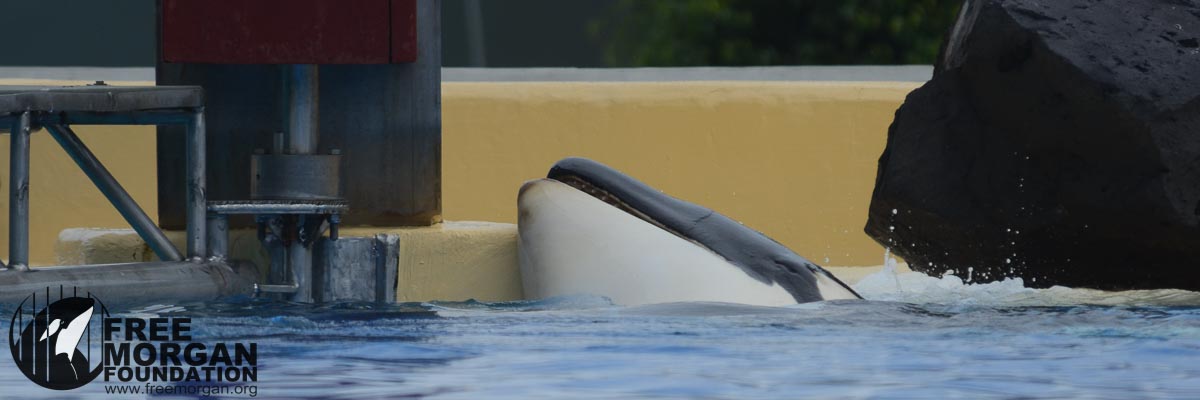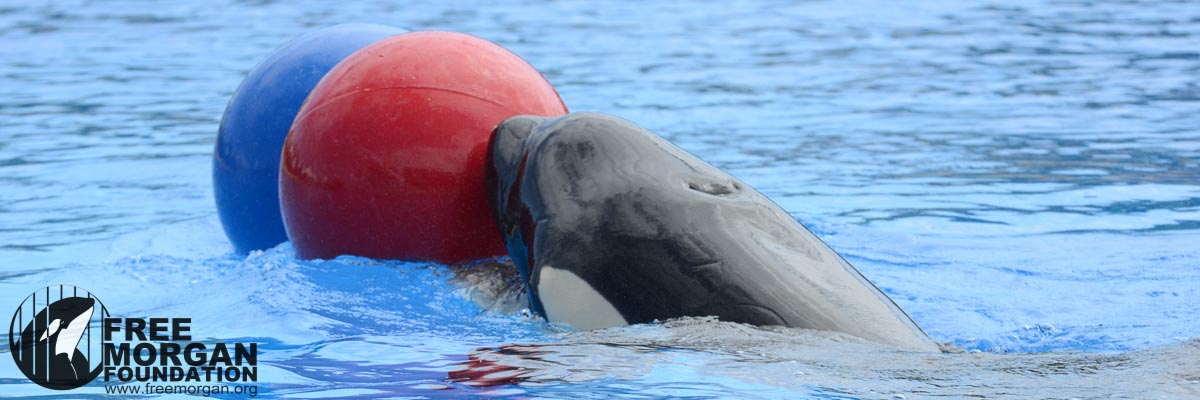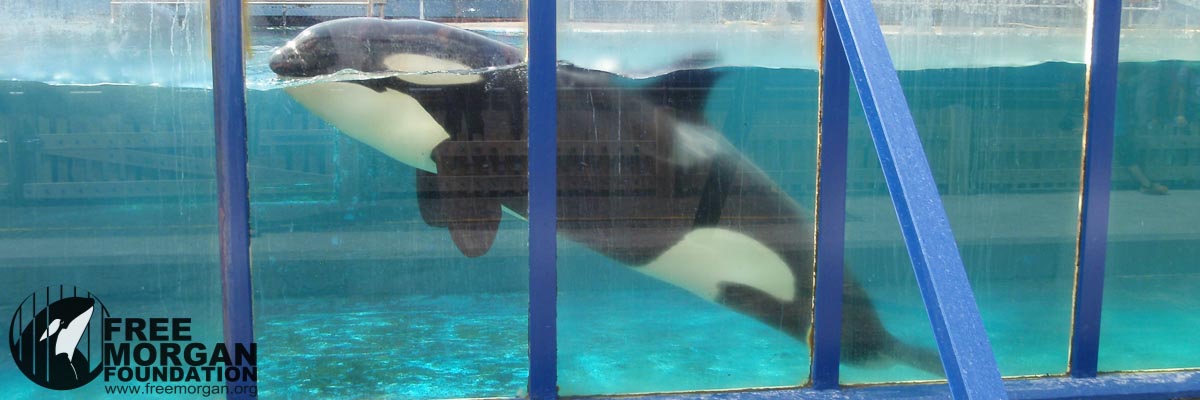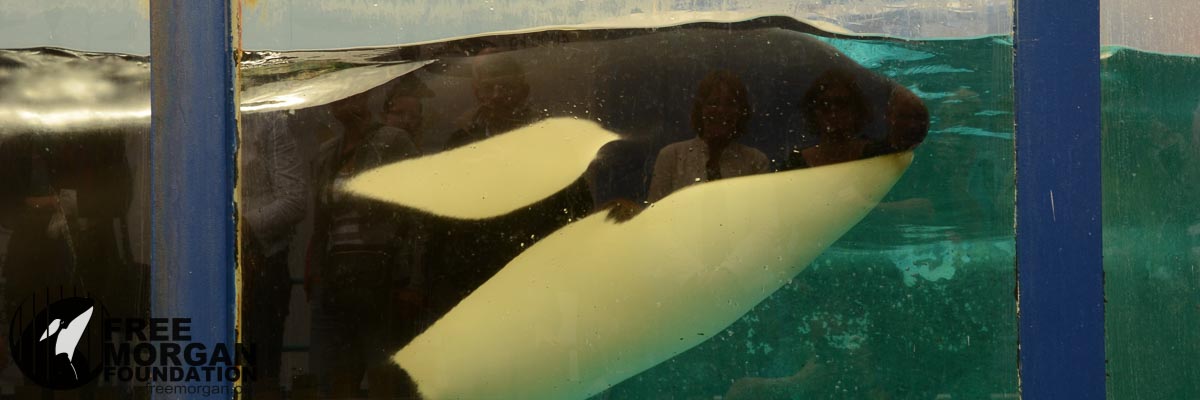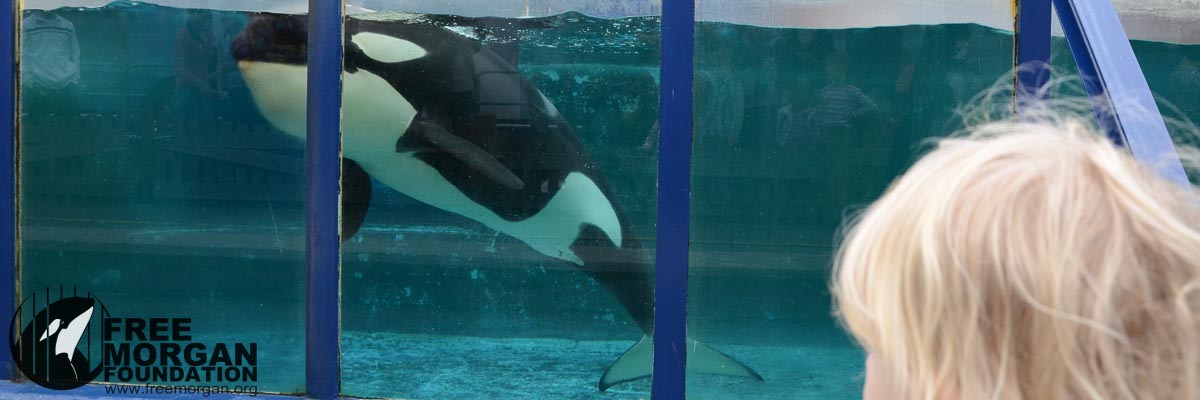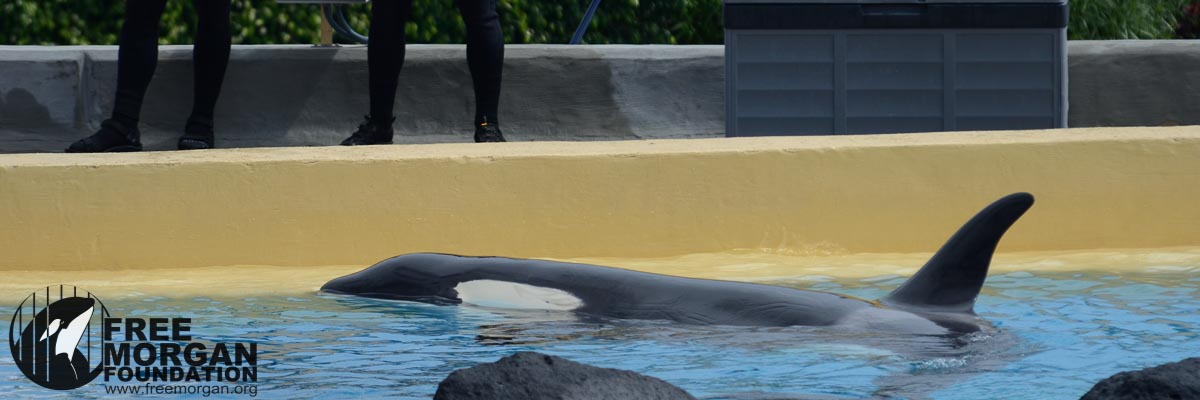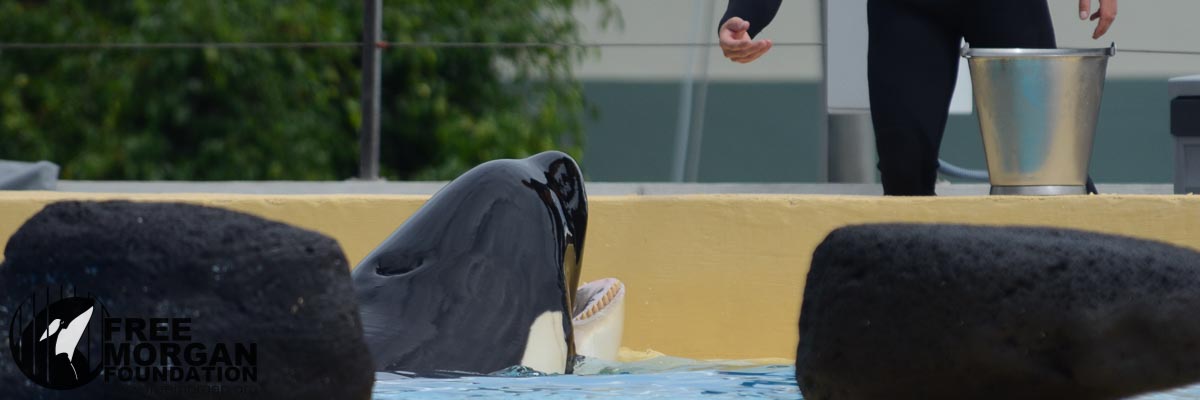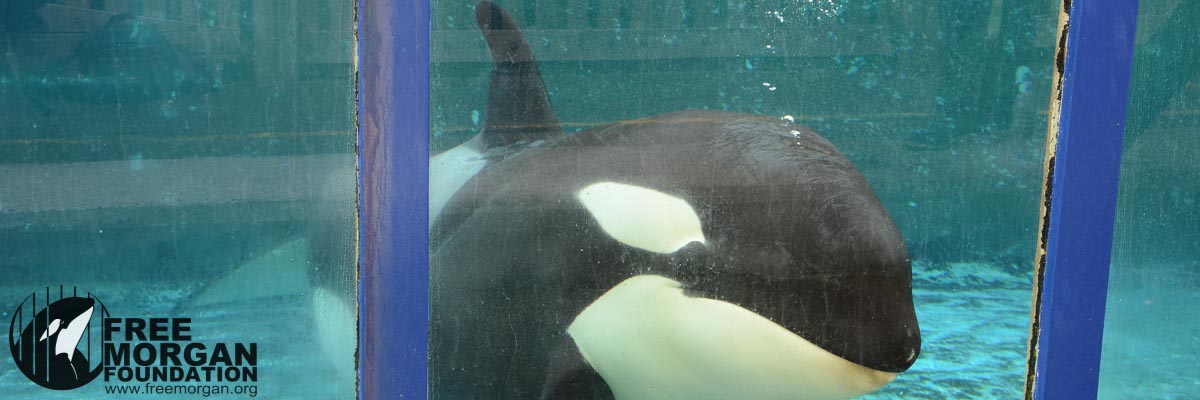CONCEPTION, DETECTION & GESTATION
 There is a lot of controversy surrounding Morgan’s pregnancy and the subsequent birth of her calf. See the page about her Pregnancy Timeline if you missed the infographic. Here we provide some details about orca pregnancies.
There is a lot of controversy surrounding Morgan’s pregnancy and the subsequent birth of her calf. See the page about her Pregnancy Timeline if you missed the infographic. Here we provide some details about orca pregnancies.
Keep in mind that it certainly appears that Loro Parque intentionally got Morgan pregnant (again, see the Pregnancy Timeline with details that support this). Such behaviour is shameful, given that Loro Parque not only claim that they provide good care for her, but also that she is “deaf“. If the later is true, then Morgan wouldn’t be able to hear her calf and communicate normally with it and yet they have purposely bred her. Also, this is despite the fact that they are not legally permitted to breed her (under European law) which is currently being investigated by the European Parliament Petitions Committee.
In summary;
- Loro Parque should have known about Morgan’s pregnancy only weeks (if not days) after she conceived – had they been conducting industry-standard husbandry care.
- Loro Parque was contractually bound to supply medical (including pregnancy status) reports to SeaWorld on a regular schedule. Therefore, SeaWorld knew about her pregnancy shortly after Morgan conceived.
Based on all the evidence, details and knowledge provided below (which we note is available to the public and should be part of Loro Parque’s minimum standards), it is logical to pose a simple question and come up with two alternative answers.
QUESTION: How could Loro Parque not know that Morgan was pregnant, for five months?
ANSWER 1. They did know sooner, and they lied.
ANSWER 2. Their animal care is so poor that they neglected Morgan to the point that they really didn’t know that she was pregnant, for five whole months.
HOW DO WE KNOW WHEN CONCEPTION OCCURRED?
Loro Parque have stated that they didn’t know when Morgan became pregnant and that it was an “accident“. Then, in a complete turn-about and just two days before Morgan gave birth, veterinarian Dr Geraldine LeCave, appeared in a video at Loro Parque and stated “We have the exact date that she ovulated“.

Although we at the Free Morgan Foundation have not been given that “exact date“, we can estimate with a 95% level of confidence when it happened and therefore when she conceived. This is because SeaWorld has published a number of studies about orca reproduction, including pregnancies and gestation periods. One study included 33 pregnant orca, which is a sample size that gives relatively ‘robust’ data. In summary, that study (Robeck et al, 2015), stated that there was a 95% chance that a pregnancy would last for between 526.5–537.9 days.
That date range can be found the SeaWorld paper: Robeck, T. R., Willis, K., Scarpuzzi, M. R., & O’Brian, J. K., (2015). “Comparisons of life-history parameters between free-ranging and captive killer whale (Orcinus orca) populations for application toward species management.” Journal of Mammalogy: 1-16.
On page 3, under Materials and Methods, Robeck et al (2015) write:
“Gestation length.—Conception dates for SEA [SeaWorld] animals were determined through endocrine monitoring as previously described (Robeck et al. 2004). The date of parturition was then subtracted from the conception date for each pregnancy to determine the gestation length. Data for each pregnancy were then combined to determine killer whale gestation length parameters (mean, median, standard error of the mean [SEM], and 95% confidence interval [CI]). While some of these data have been previously reported (Duffield et al. 1995; Robeck et al. 2004; Robeck and Nollens 2013), the data set herein represents the most comprehensive to date.”
The papers that they refer to are:
Duffield, D. A., et al. (1995). “Killer whale (Orcinus orca) reproduction at Sea World.” Zoo Biology 14: 417-430.
Robeck, T. R. and H. H. Nollens (2013). “Hematologic and serum biochemical parameters reflect physiological changes during gestation and lactation in killer whales (Orcinus orca).” Zoo Biology 32: 497-509.
Robeck, T. R., et al. (2004). “Reproductive physiology and development of artificial insemination technology in killer whales (Orcinus orca).” Biology of Reproduction 71: 650-660.
on page 6, under Results, Robeck et al (2015) then write:
“Reproductive parameters.—The mean ± SEM, median, range, and 95% CI for gestations of known length in the SEA population were 532.2 ± 2.8 days, 534.0 days, 473.0–567.0 days, and 526.5–537.9 days, respectively (n = 33).”
If you aren’t familiar with mathematical equations for these types of calculations, then it might help to know the following:
- The mean (a type of ‘average’) of 532.2 days is found by adding up all the days each orca was pregnant, then dividing that number by the 33 pregnancies, to give 532.2 days. The ± 2.8 days indicate that there is a likelihood that 532.2 has an ‘error’ of 2 days more or 2 days less.
- The median (534.0 days) is the midpoint of the observed values and there is an equal probability of being above or below that day.
- The range (473.0-567.0 days) is the minimum and maximum number of days, when considering all 33 gestations.
- Then comes the ‘95% Confidence Interval’ of 526.5-537.9 days. This is the range of dates that there was a 95% chance of that any of the 33 gestations would be this long.
So, the Free Morgan Foundation took the number of days within the 95% Confidence Interval, together with the date Morgan gave birth (22 September 2018) and plugged them into an online time and data calculator. It was then possible to calculate ‘backwards’ that 526.5 days of gestation would give a conception date of 15 April 2017, while 537.9 days would give a conception date of 3 April 2017. These are the two April dates that appear on the FMF infographic about Morgan’s pregnancy.
HOW SOON CAN YOU TELL IF AN ORCA IS PREGNANT?
There are two generally recognised types of pregnancy tests for orca; using urine or blood samples extracted from the mother. Both tests detect the presence of a hormone produced by the placenta shortly after the embryo attaches to the uterine lining. That hormone builds up rapidly in the mother’s body in the first few days of pregnancy and is therefore detectable very early (within days) in a pregnancy (and certainly within just a few weeks).
A few weeks after conception, urine tests are around 97%-100% accurate. Blood pregnancy tests have a 93-100% accuracy rate.
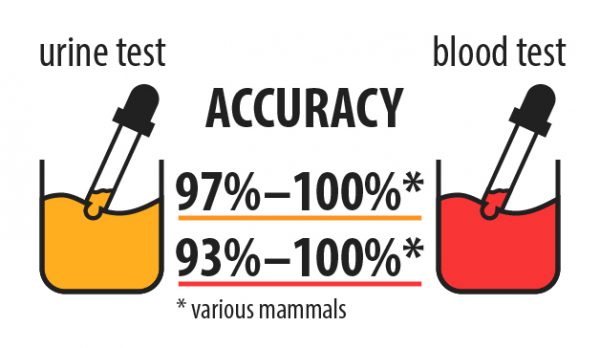
Additionally, there is a method (ultrasound) used to confirm the status of the fetus and another method (body temperature) that can be used to alert staff that an orca is likely pregnant and also when she is about to give birth. We provide some details about these tests and methods here.
Urine
For the urine text, the urine is typically gathered when the orca slides out onto her side and pees on command (yes, the orca are taught to pee into a cup!).
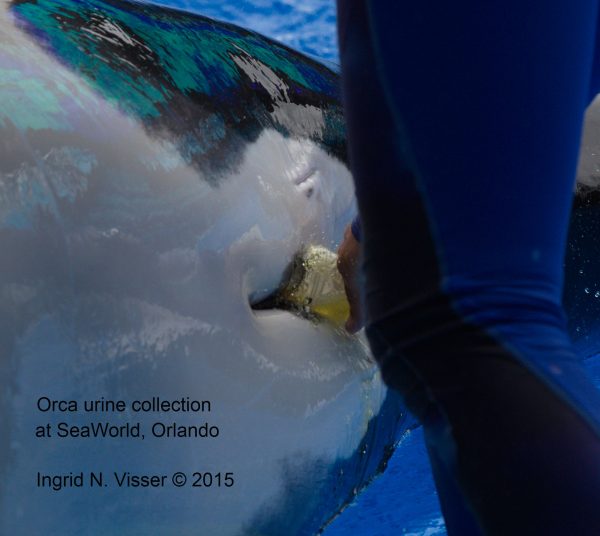 SeaWorld typically conducts these urine tests daily (as outlined in a number of their scientific papers, in the section listed above). Loro Parque was under a contract with SeaWorld to conduct monthly “Urinalysis, if the killer whale is trained for urine collection.” Various sources, such as trainers in video’s, state that Morgan is trained for this. Additionally, it seems that, like the SeaWorld parks, this is done daily at Loro Parque.
SeaWorld typically conducts these urine tests daily (as outlined in a number of their scientific papers, in the section listed above). Loro Parque was under a contract with SeaWorld to conduct monthly “Urinalysis, if the killer whale is trained for urine collection.” Various sources, such as trainers in video’s, state that Morgan is trained for this. Additionally, it seems that, like the SeaWorld parks, this is done daily at Loro Parque.
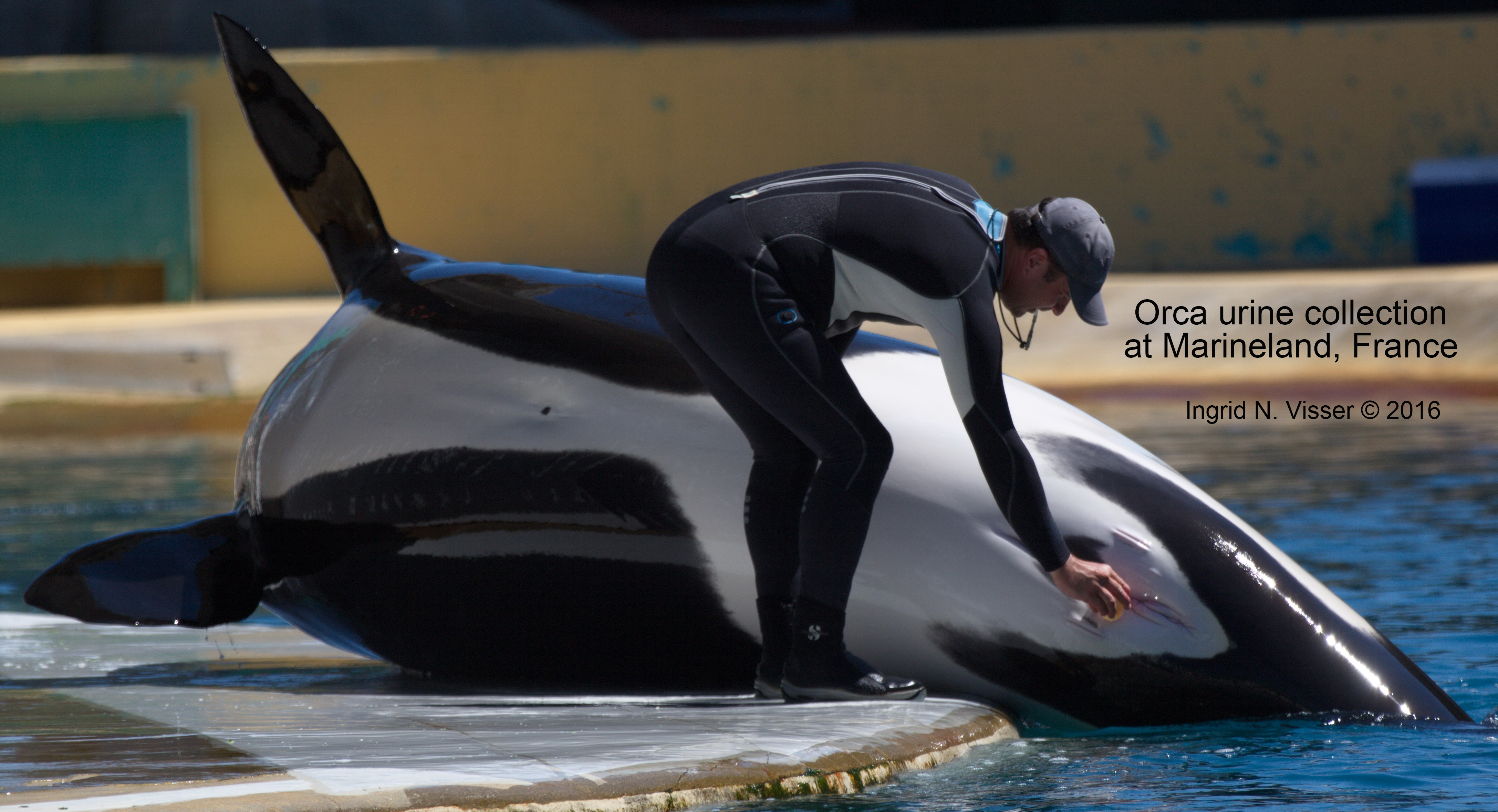
Blood
The blood tests involve intravenously extracting blood from a vein (typically on the underside of the tail flukes). Such venipunctures often leave marks which are visible to the naked eye, such as bruising or ‘track marks’, similar to those found on the arm of a drug addict where the needle puncture marks are obvious.
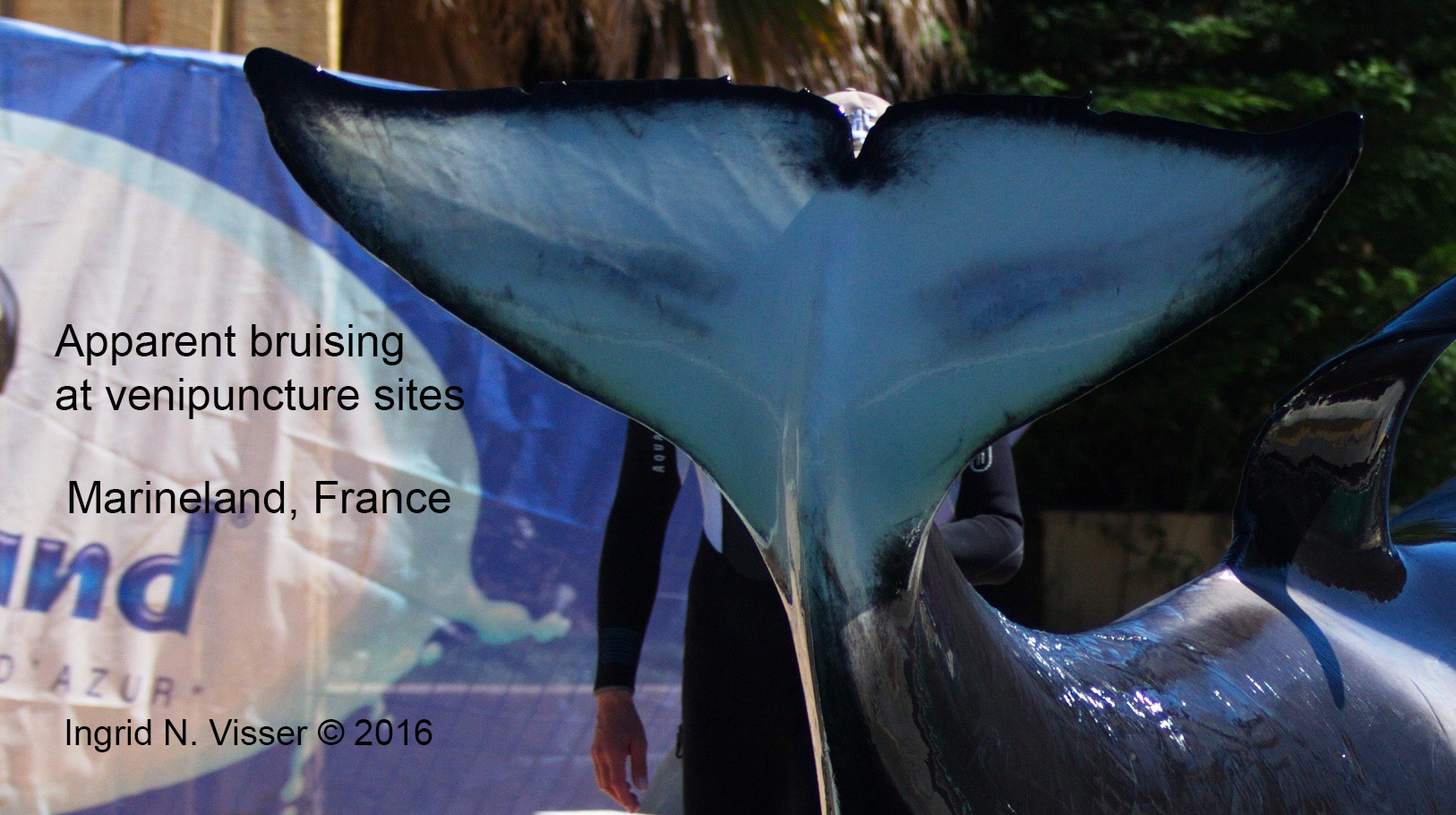
Blood tests are typically done at SeaWorld once or twice a month (as outlined in a number of the scientific papers, listed in the section above). Again, under that same contract, Loro Parque was required to conduct blood tests where the “Parameters tested and reported are to duplicate those reported in the SeaWorld Parks.” And, they were to have the tests done immediately, so that the “Results should be available on the same day as the blood is drawn.” The frequency required under that contract was “Monthly“.
Ultrasound
Ultrasound monitoring can be used pre-conception and post-conception for different aspects of a pregnancy. Pre-conception ultrasound monitoring can be used to confirm the status of the ovaries (ovulation) prior to conception and post-conception allows evaluation of the fetus (growth rates, heart beat, position in the uterus etc).
In humans, the fetus can be detected as early as the sixth week and the heart beat at around six-and-a-half weeks. However, Dr Javier Almunia in an interview with the pro-captivity ‘Zoo Media’ website, pointed out an orca uterus is relatively big compared to a human. But it is worth remembering that an orca fetus develops proportional to the size of the mother, so it becomes relatively big as well (with a newborn orca being 2.06–2.5 m in length and around 180 kg in weight, so larger than the average adult female human).
Additionally, Loro Parque has claimed to be leaders in doing ultrasound on orca, including developing an ‘ultrasound atlas for killer whales‘ (which is unavailable to those outside of the industry, severely limiting its scientific value). As Loro Parque have claimed to be such experts it would be assumed that they could find a fetus before it was 5 months old. There is video of Morgan having an ultrasound at Loro Parque on 23 Feb 2016, so we know that she has been trained for this for a number of years now.
To put it into perspective, Morgan’s fetus at that stage should be at least the same, if not bigger than an orca fetus described as, “a normal 129-day, 136-g, 19-cm (total length) male fetus.” [where 129 days is 4.24 months]. This quoted data comes from Robeck et al (2004), who published a paper about artificial insemination of orca at SeaWorld. One of the orca they impregnated died during the study and the fetus described above was presumably extracted during the necropsy.
At five months of age, Morgan’s fetus size should have been no less than the 19 cm size of the one described by Robeck et al (2004), which was a slightly younger age. So, even if Morgan’s fetus was curled up in her uterus it could not have been less than 9.5 cm in length (and would be at least 5cm in width). It would have been clearly visible on an ultrasound. In order to understand that size in relation to what can be seen on an orca’s ultrasound, in the same Robeck et al (2004), paper the authors show a follicle (on an orca ovary), which is clearly visible at 2.6 x 3.6 cm (see the image below, which is from the same 2004 study by SeaWorld).
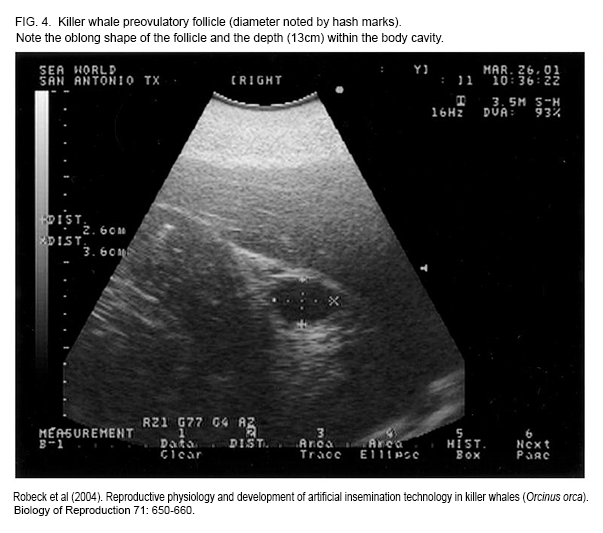 Additionally, Dr Almunia has mentioned that the ‘body fat’ (which is called blubber in all species of cetaceans) is comparatively thick. That too is true, but we know from a number of published scientific papers that orca blubber is typically not more than 7 cm thick. From the few images available outside of the industry, which show ultrasound of orca, the signal is clearly not impeded significantly by this blubber layer – (such as in the picture above, where the blubber can be visualised as the white ‘band’ at the top of the ‘cone’ and is between 3-4 cm thick, when measured on the scale on the left, in this female orca).
Additionally, Dr Almunia has mentioned that the ‘body fat’ (which is called blubber in all species of cetaceans) is comparatively thick. That too is true, but we know from a number of published scientific papers that orca blubber is typically not more than 7 cm thick. From the few images available outside of the industry, which show ultrasound of orca, the signal is clearly not impeded significantly by this blubber layer – (such as in the picture above, where the blubber can be visualised as the white ‘band’ at the top of the ‘cone’ and is between 3-4 cm thick, when measured on the scale on the left, in this female orca).
Loro Parque Foundation’s Dr Javier Almunia, under oath in a Spanish Court (on the 9th of October 2017), stated that in order to control breeding they “have established a system by which every female [orca] undergoes an echography [ultrasound] daily and it is verified whether they are ovulating.” He then clarified that “From that, different management alternatives can be undertaken, such as temporary separation until the female’s fertile period ends, or oral contraceptive use that are not the most adequate because they’re not 100% effective and have side effects.”
Such a statement about “daily” monitoring is very telling, especially when you recall that Morgan was pregnant for six months on the day of the court case, yet he answered ‘No‘ to the question of if any orca at Loro Parque were pregnant.
Furthermore, orca estrous cycles are approximately 41 days, and even though pseudo-pregnancies may occur (see Robeck et al 2004 above for more details), within two months of conception, there would be absolutely no doubt that Morgan was pregnant, if they actually were checking her ovulation “daily“.
Body Temperature
Body temperature (rectal) monitoring is used to help detect if an orca is pregnant, as it goes up significantly in first trimester of pregnancy. Katsumata et al (2006) notes that “Body temperature clearly increased during the first phase of pregnancy, and this was followed by a gradual decline until full term.”
Additionally, they note that it it possible to predict when an orca is likely to give birth, based on monitoring of the soon-to-be mothers internal body temperature (using a rectal probe). “A decrease in body temperature was first detected on day 5 (p<0.01) before parturition, and body temperature decreased significantly every 2 days until delivery. Five days before delivery, body temperature was 0.3 C lower than the mean value during the pregnancy period, and the decrease was more marked on day 1 before delivery (0.8 C). … These results suggest that monitoring body temperature variation can be considered valuable for predicting impending parturition in killer whales.”
Those details are found in:
Katsumata, E., et al. (2006). “Body Temperature and Circulating Progesterone Levels before and after Parturition in Killer Whales (Orcinus orca).” Journal of Reproduction and Development 52(1): 65-71.
CONCLUSIONS
Loro Parque, beyond all reasonable doubt, must have known that Morgan was pregnant before the five months they have stated.
However, if they really didn’t know, then their animal husbandry is shockingly poor, which has been a concern about the situation at Loro Parque for years.
